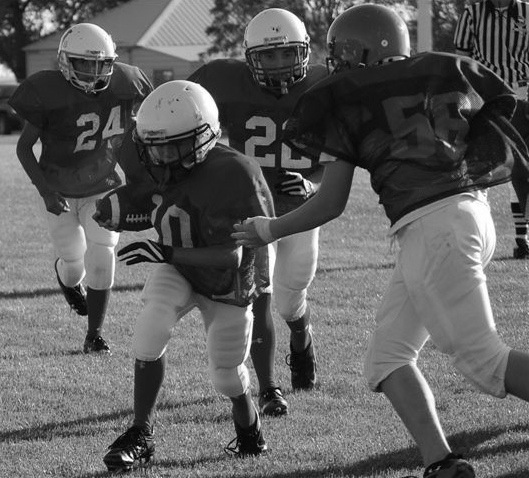
Cory60.com
Junior High
Your Online Class Reunion
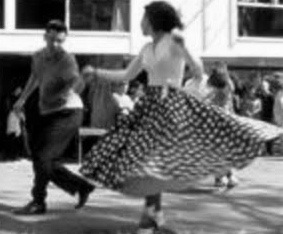
 |
Cory60.com Junior High Your Online Class Reunion
|
 |
We arrived in junior high the day after Labor Day, 1954. Many of us knew some kids from across town from sports, band, Scouts or church, but now for the first time we were in daily contact with over 100 kids our own age and 300 altogether. The building seemed immense with its three floors and U-shaped layout. We had lockers, PA announcements, electives, gym, home ec, shop, official school sports and cheerleaders, marching band, newspaper, class changes, clubs, a school library and male teachers to get used to. Homework increased significantly and each teacher felt his or her subject was the only thing in the world that mattered. Clothes, music and social status were all of a sudden important. The school week and year revolved around Events : games, dances, field trips, etc. The photo at right is a boys' health class. We had all boys classes in health, gym and shop. The girls were by themselves in health, gym and home ec. We lost many great friends and classmates as we moved to junior high. Dale, Sarah, Phillip, Diane, Ritchie, Sleepy, Donnie, Wayne, and Pat either moved away or transferred to private schools. Bonnie, Kenny and Ann J left us at midyear. They had already been elected to positions, joined extracurricular activities and made good grades. Their losses really diminished our class. |
 |
|
For seven years in grade school we had been under the influence of one unsung hero. Very few kids are so lucky as to have two such men in their lives. We were. Herbert Snell would be our junior high principal for three years. We never realized he had been one of the most successful basketball coaches in the WPIAL. In 10 years his teams won six section titles and advanced deep into the tournament, once reaching the finals before losing a heartbreaker. Snell had been Coach of the Year four times and still holds one of the best percentages in WPIAL history. Turning his attention to administration in 1945, Mr. Snell became one of Pennsylvania's most respected advocates for the "junior high" concept, which was still a new idea in the forties. He spoke at conferences and published essays on radical innovations, like offering "manual training" and home economics to kids beginning in seventh grade, running full scale football and basketball teams at the junior high level, and teaching everyone to dance and offering weekly dances as a means of acquainting kids with social etiquette and socialization skills. But his most radical idea was "self selecting academic grouping." He advocated alphabetically placing seventh graders across sections. Then, based on their academic performance in seventh grade, they were placed in eighth grade sections of varying intellectual sophistication. Dividing our enrollment by 25, he came up with five sections. We found ourselves placed in 7-1 through 7-5 sections alphabetically, then in eighth grade in 8-1 down through 8-5 based on how well we did in seventh grade. Again they shuffled the sections for ninth grade, allowing "late bloomers" to work their way up and slackers to drift down. We took this for granted, but today it is used all across the nation. Herbert Snell was the first to implement it in a public junior high. He published several articles on it. We were guinea pigs. But we were also the beneficiaries. By bringing the very best kids together in the same classes where they were forced to compete head to head against other kids their own age, with the stakes continually rising, he forced us to become competitive, to work harder than we otherwise might have, and to develop what skills and talent we had to the highest level. Mr. Snell was a visionary whose notions of education had formed within a sports context : he believed in competition, motivation, tracking performance, and continually selecting. Like his grade school counterpart, he was never appreciated, understood or rewarded by Coraopolis, but fortunately for us they did leave him alone to do things his way. We owe him a huge debt. |
We had lost many valued classmates as we left grade school, but we gained some, too. Pete moved in from McKees Rocks. He would become a role player in football and baseball and our senior year would be the sixth man on the basketball team, with many longtime basketball conneisseurs firmly believing he should have started with his long arms and quick hands. Pete would go on to Michigan State, move back to Kennedy Township and spend a career as an engineer. Janet (shown, right, in eighth grade) moved in from Mooncrest. She would be a key participant in gymnastics, volleyball, basketball, softball, and cheerleading and be an honor student and member of various clubs and activities. She would become a forensic psychologist and an outstanding photographer. Many of the photos on these pages are from her files. DavidH transferred from the Pittsburgh Blind School and gave us all an education into how to overcome adversity. He swam with us at the YMCA, shot baskets with us on the driveway courts, and taught us how to analyze car engines by their sounds. Some kids just moved across town. DavidT moved from Devonshire down to Ridge Avenue. Bobby moved from Thorn Run to 5th Avenue below the high school. Sharon moved from Vine Street down to 5th Avenue across from the Presby- terian Church. |
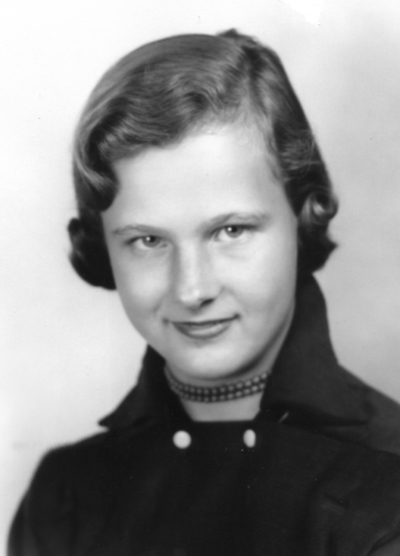 |
September '54---We were divided into five homerooms of 30 students each. After one week of school we elected home room officers: president, vice president, secretary, treasurer and representative to student council. This first tentative setting up of our new social hierarchy at the age of 12 going on 13 resulted in the following... Room 31 : Louis, Tom Goodnight, Elaine, Sharon Durst, Vitalis. Room 32 : Gloria, Ida Dwyer, Albert, Bonnie Knollinger, Bill N. Room 33 : George E, Lynette, Honey, Nancy, Bill C. Room 24 : Dorothy, Jimmy Owens, Dennis, Margaret Wh, Nick. Room 23 : Jimmy S, Kitty Lou, Carolyn M, Anne J, Bob M. |
 |
A lot of us knew the Funicellos from Rochester, since several thousand Coraopolis families vacationed at Erie every summer and they had a vacation cabin right along with the rest of us at the entrance to Presque Isle. We played together on the beach and at Waldameer Amusement Park as little kids. We knew she'd been taking dance and acting lessons from first grade on. That 5th grade summer when she said she was signed up to audition before someone from Walt Disney for a new tv show, we wished her luck. When during our 6th grade summer the family told us all goodbye and said they were moving to California because she'd been selected and would be part of the cast for the new show, we had mixed emotions. We were a bit envious, we wished her luck, and we hated to see them go. We were a bit old for mice and cartoons by seventh grade, but we tuned in for the new show just to see her. She was our only connection to Hollywood so we felt she was special, and the fact that she kept sending us Christmas and birthday cards long after she was famous endeared her to us. We watched in wonder as she became America's Sweetheart. By the time we were in high school, the girls could have Ricky Nelson and Fabian because us guys had Annette. She grew up into quite a beautiful young woman, but Disney kept a tight hold on her contract and she was never able to move beyond childhood roles or mediocre movies. We all loved her in an abstract, distant kind of way, and it broke our hearts when she came down with muscular dystrophy and withdrew into her wheelchair. A generation later, kids in Coraopolis would grow up with Michael Keaton, but Annette from Rochester, the girl of our grade school beach vacations, was the closest connection to Hollywood we had. |
| Our first major class activity was a skating party at the Neville Skating Rink from 3:00 - 6:00. Ninety two of our 121 classmates attended. |
| Frank, Tony and Joe C pause before another Friday night band performance at football halftime. Almost all of us joined the marching band at the beginning of seventh grade. Our biggest challenge was keeping our white bucks clean. Band practiced every day in the band room and then we hiked up to the stadium with our lunches on Thursdays to work on formation. Under Sam Carson (woodwinds), Sam Yahres (brass), and Tony Manna (percussion), Coraopolis had a good band, but our rivals had all high school students and the majority of our members were in grades 7-9. As we reached high school, students got part time jobs, joined other extracurricular activities and got drivers licenses, so they dropped out of band one by one. The organizational chart looked like a pyramid, with a huge base of seventh graders and only a few left by 12th grade. Nevertheless, it was a good experience. In addition to the football games, we marched in several parades a year, put on several concerts, played for school musicals, and marched in the Kennywood Park Fall Festival every August. When the football team and cheerleaders began practicing in August, the band began its own two week preseason practices. Since junior high football games were on Monday nights, many of us were in band and football. As we reached high school, those still in football dropped out of band in the Fall but stayed in the class, participating in the parades and concerts. As we progressed through junior high, we were encouraged to try other instruments, so clarinetists learned to play the saxophone, oboe, bassoon and flute, trumpets learned to play the coronet, trombone and tuba, and percussionists learned to play snare, base, cymbals and the xylophone (bells). As we hit high school, Jean and Nancy put down their clarinets and donned the Blue Devil costumes, while Karen put down the xylophone and became our star majorette. | 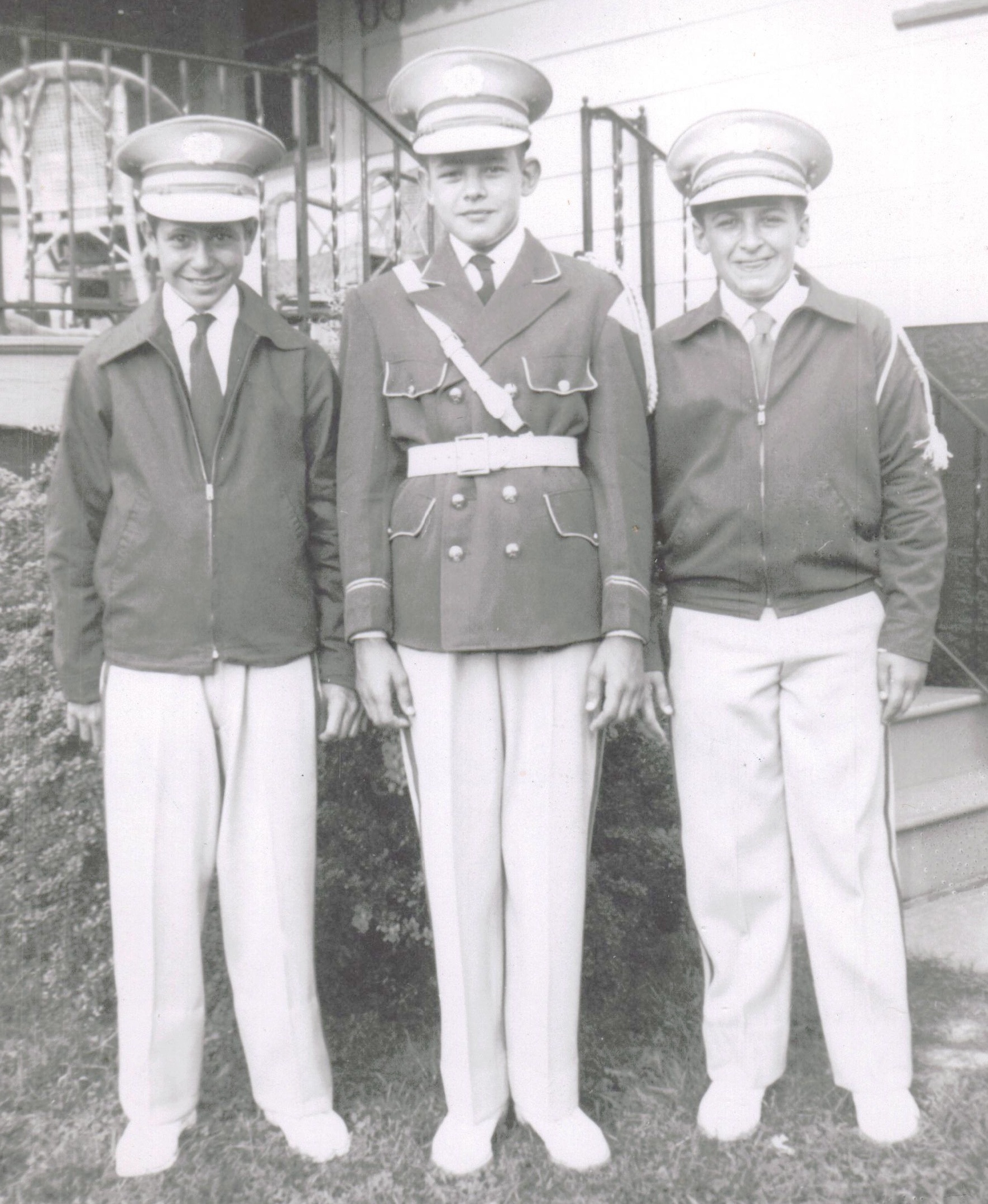 |
| Home Rooms took turns doing the morning announcements over the school PA system. Announcements took the form of a radio broadcast. On special occasions the regular news broadcast was supplemented by a radio drama or ceremony. The first time a seventh grade broadcast lined up with a major holiday was Columbus Day. A radio play was presented with Carol as Queen Isabella, Chuck M as King Ferdinand, Vitalis as Columbus, and other characters played by Ann M, Michaele, both Margarets and Nancy. |
 |
We continued to spend time on the river. Using flat bottom "John Boats" for stability, we ventured down to the Sewickley Bridge and around and up the Main Channel not only to the upper tip of Neville Island, but beyond that to Bruno's Island off Stowe Township. When the big tows and their barges appeared, we just turned the bow into the waves and enjoyed rhe roller coaster ride. No one thought anything about it at the time, but we never wore life jackets. It didn't matter. None of us ever capsized, and even if we had, by seventh grade we could all swim, thanks to Scouts, the Y and Dravo. The river was a strange kind of wilderness. We were surrounded by freight and passenger trains on both banks, traffic on the Ohio Boulevard and over three bridges, tugs and freighters churning up the river, and the clanging of heavy machinery in mills on the Coraopolis and Neville shores. Still, there was a kind of isolation out on the water, and in between all the noise, there would be five to ten minutes of absolute quiet. We knew where the shallow spots were for swimming and the deep spots were for fishing, where the sandbars were for camping or lunch and where the landings were all along Coraopolis and Neville if we wanted to go ashore and say hello to anyone. Some of our favorite pastimes were pulling up along the dam and watching tugs push barges through the locks, and pulling up along the north shore and watching Dravo launch new riverboats down its skidpath. (We had to keep a safe distance because when the boat hit the water it kicked up quite a tidal wave and we'd known adult fishermen who'd been caught and capsized by one.) We loved our river. Mark Twain was right. It had a certain magic to it. |
| Mr. Carson announced tryouts for the Special Chorus, his euphemism for 7th Grade Chorus, separate from the Junior high Chorus, which was mostly ninth graders with a few eighth graders. Earning spots on the Special Chorus were Nan, Rita, Judy Ceyrolles, Joyce B, Ann J, Mary Kay, Marianne, Lynette, Elaine, Sandra and Blanche. At concerts, the Special Chorus would perform its own pieces in between songs by the older girls. |
 |
Our junior high had one of the state's most advanced vocational training programs. Classes were not electives. We spent one semester each year in what we called "mechanical drawing" but today are called drafting classes (Ross, Frank and Tom, at right). Mr. Caledonio taught us about blueprints and plans. We started out fairly simple but by ninth grade were working in three dimensions. Some of us would later use these skills on the job. Others would find them valuable in high school and college physics and engineering and later in science careers. |
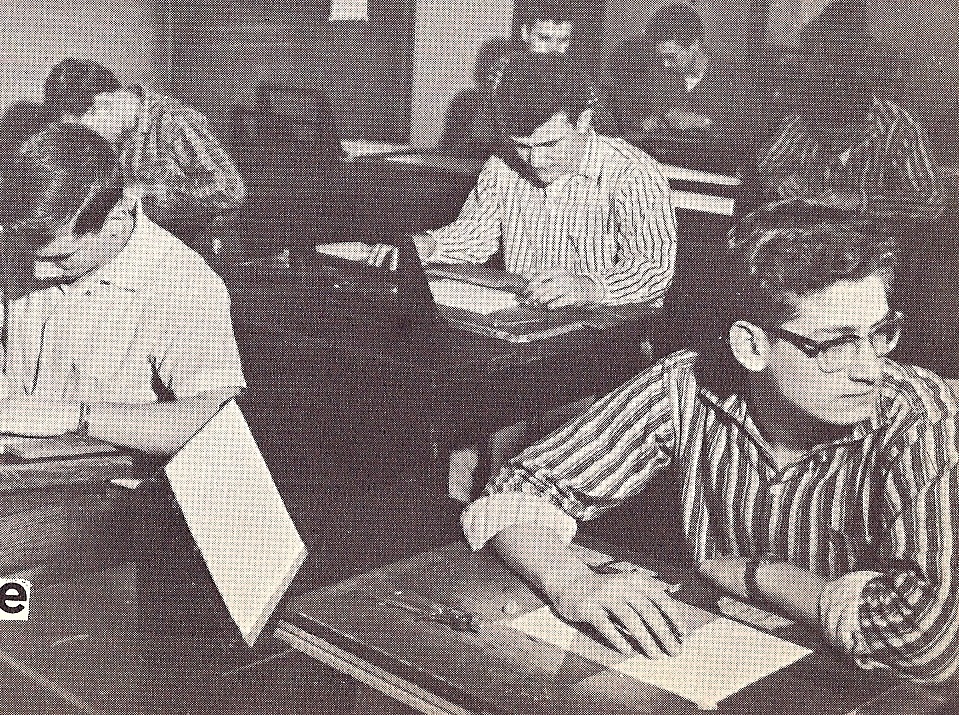 |
| The first 7th grade honor roll, announced in October, consisted of Gerry, Bill C, David H, Elaine, Linda, Nancy, Jean, Louis, Claudia and Jim. |
 |
Mr. Snell had been unsuccessful trying to persuade the board to build a wing onto the main junior high building and include a new state of the art wood and metal shop in it. Our "shop" was relegated to a World War II steel "portable building." However, our location in one of America's top mill towns carried certain advantages. He convinced the mills it was to their benefit to help us in training future machinists and industrial employees, and whenever they upgraded their equipment, we received any of the older machines we could use. We had drill presses, fabricators, lathes, jigsaws, band saws, welding and soldering irons and others. | 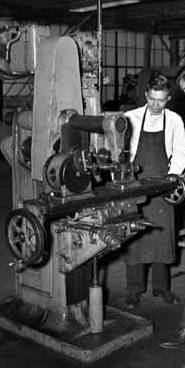 |
| Each year we were in junior high, our second six weeks PE classes were held at the YMCA Pool. The first day they tested us. Then we found ourselves divided into nonswimmers, beginning swimmers and good swimmers. The goal was to bring every nonswimmer up to swimming level within six weeks, while moving beginners up to good swimmers and good swimmers up to lifeguards. Mark Holpfer and Doris Windsheimer were in charge of walking us down and back, and YMCA swimming instructors did the actual teaching. Most of us considered this a wonderful break from the school day |
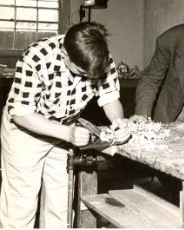 |
Mr. Henry taught the "shop" classes. For three years, every boy was required to take shop. Each year, we learned about woodworking and metalworking. This included using all the power tools plus sanding, painting, varnishing, and, in the case of lamps or other fixtures, wiring. We had to learn to solder and use the lathe. We started out with kitchen cutting boards in seventh grade, did bookcases in eighth and ended up with tables and chairs in ninth. In metalworking, we started out making a sugar scoop, did mailboxes and racks in eighth, and ended up making lamps in ninth. This photo is posed for the camera. In the actual classes, Mr. Henry would never allow anyone to approach a work station without their apron and safety goggles. |
| The Veterans Day Special Broadcast over the PA was done by Eleanor, Gerry, Michaele, Margaret Wh, David T and Don S. |
| As we left grade school, as a parting gift Harry Houtz introduced Danny to Bill Likens down at The Coraopolis Record. The whole time we were in junior high, Danny trained as a reporter under Likens and News Editor Bill Sholes. He covered everything from sports to meetings and spent several hours a week learning to lay out pages, write headlines and handle other duties relevant to publishing a weekly newspaper. By ninth grade he was delving into investigative reporting, photography and advertising. Likens and Sholes, both award winning community journalists, continuously harped on the importance of noticing and remembering specific details. As we left ninth grade, Danny won his first national award for a feature article on Coach Vincent Walsh and the Neville Island football program, a Class C school competing in Class B and compiling the winningest percentage in Pennsylvania, including an undefeated season whle we were in ninth grade. With Danny out in the community, Carol and Michaele reported day by day school items to the Record. |  |
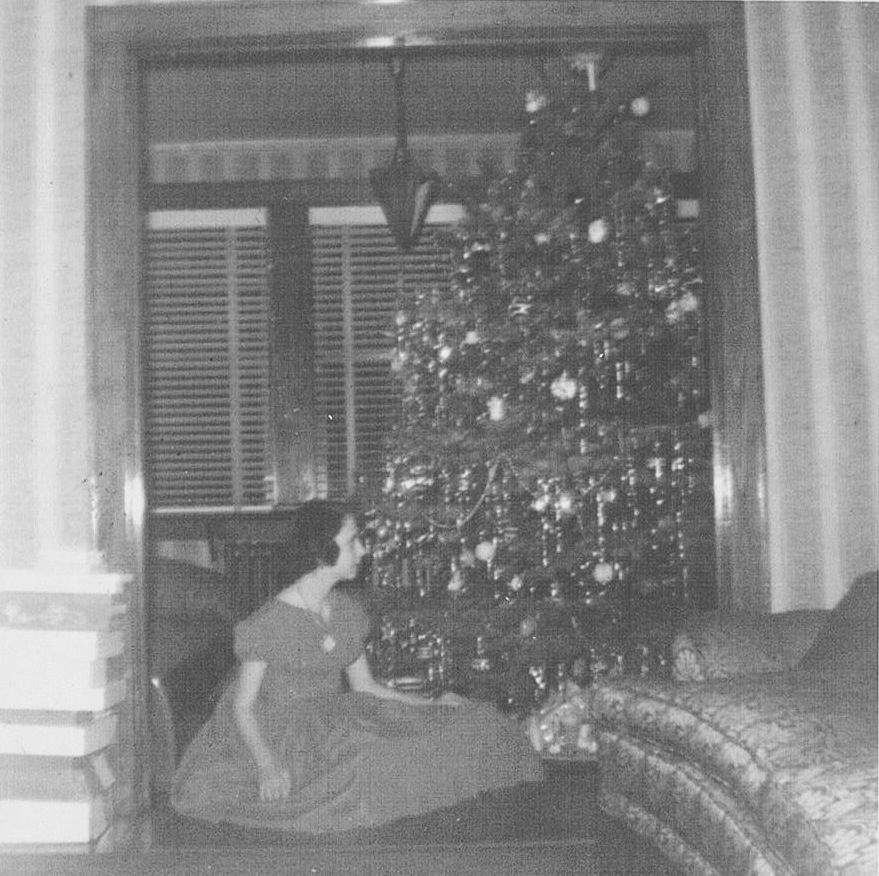 |
Marilyn admires her family Christmas tree. Most families with sons had model train layouts running around under the tree, often taking up most of the living room. But families with daughters usually did not have the train layout, unless their fathers were particularly interested in keeping the tradition alive. |
| The biggest school project any of us had ever seen was the one we created in Mrs. Mary Phillips' 7th Grade Geography classroom. She taught five sections and each section was responsible for one part of the display. There was The Great Wall Of China, a Rice Paddy, a working Rickshaw, a Sampan, and a working Sedan Chair. Dr. Emily Jones, who had the greatest doll collection in town, loaned several of Chinese dolls to complete the exhibit. We finished it in time for Parents Night. They were suitably impressed. A lot of us kind of hated to tear it down. |
The YMCA was only two blocks from the junior high and we used it heavily. It had better facilities in every way, but it especially had better dressing rooms and showers. We went to the Y to swim, lift weights, play pool and ping pong, bowl, play tennis, and play basketball during the off season on rainy days. The Y had one bizarre policy which we grew up with and took for granted, but still seemed wierd. It required guys to all swim naked. Signs mounted in the locker rooms claimed this was to prevent disease but the Y pool had more chlorine than Dravo or Windwood and we suspected any germ caught in that water wouldn't last 60 seconds. In the photo at right, notice the white high top Converse All Star shoes. When we played basketball for the school, they issued us shoes, and they were always Converse high tops. Usually they were black but a few years they were white. Compared to the sophisticated modern basketball shoes, they were pretty primitive. It's a wonder we didn't all limp around with fallen arches or knee injuries. |
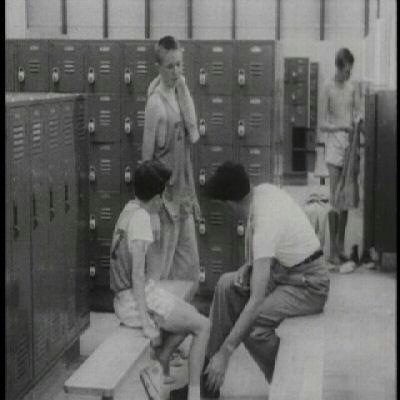 |
During our first semester of 7th grade the big news story was the opening of the new Moon Township Consolidated High School. |
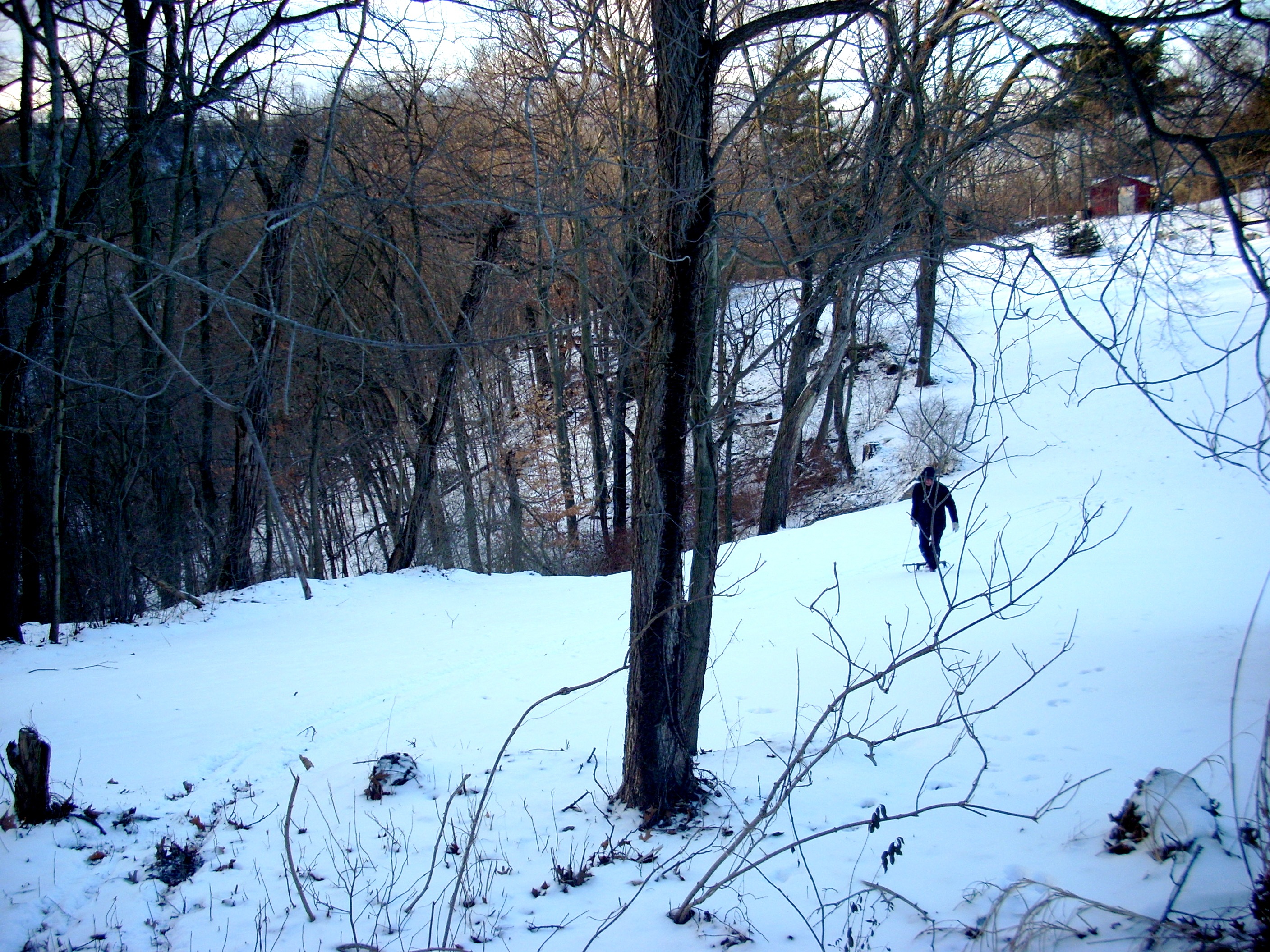 |
We continued to sledride during our junior high years. It became more of a social activity, with guys inviting girls to spend an evening or afternoon on the streets or slopes. All three Christmas Vacations of our junior high time were cold and snowy. At left Paul tows his sled back up the hill at Coraopolis Park. The park was offroad and had a nice long run and a long level stretch at the bottom for slowing down, but it had a wicked sharp right turn that sent a lot of sledders off into the woods. We put on anything we owned that would keep us warm : old newsboy hats, stocking caps, hand me down Navy pea coats, scarves, long underwear. Some of us didn't really have much warm clothing and we were cold a lot, but it didn't keep us from going sledriding. We just kept moving. We must have been a tough bunch, because despite all those hours sledriding without gloves or hats, we still didn't get sick much. |
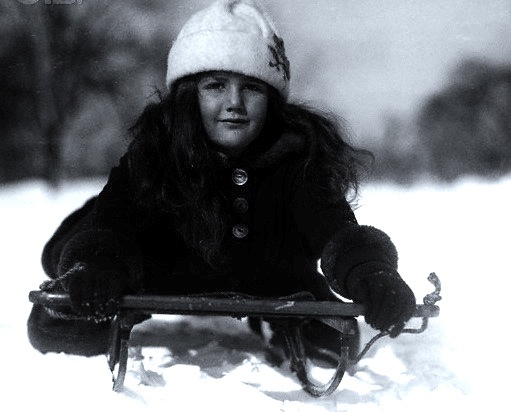 |
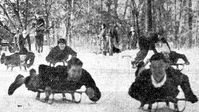 |
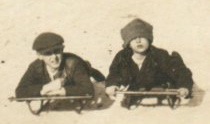 |
This was our sled of choice if we could afford one or if we got lucky enough to get one for Christmas or a birthday. This is the Flexible Flyer Junior, a fast, quick and durable sled made in Philadelphia. A guy who got one of these in grade school would still have been using it in junior high, but would probably move up to a full length Flexible Flyer in high school. Girls could usually keep their junior model all the way through. Each day before use we would lightly sand the runners with emery paper, then ice them with snowballs or an icecicle. Those are oak slats and steering bar and stainless steel runners and frame. A lot of these sleds are still in use as we have handed them down to our own children and then to their grandchildren. Properly cared for, a Flexible Flyer is practically indestructible. Sixty years after we got ours, this is the only sled still made in North America. Most people in Coraopolis bought theirs at the Coraopolis Hardware, which had the local franchise. They carried a lifetime guarantee and our fathers were careful to place that guarantee in our names. Today, 60 years later, Flexible Flyer still stands behind those guarantees, although they rarely have to. A fad today is to smuggle a Flexible Flyer onto a major ski slope and ride it down some of the trails. The ski patrol is opposed to this practice and will throw sled and owner off the property, but the few rides are fun while they last. The Flexible Flyer usually beats all the skiing competition down the slopes. Today, Coraopolis no longer block off streets for sledriding, and with the school on top of the hill the park is no longer suitable. But Omlors Hill is still heavily used. Danny doesn't live there year round any more, but Coraopolis kids still hike up there and ride down through the woods. Danny's cousin, who is the year round resident, has instructions to allow sledriding on the hill as long as no vandalism occurs. |
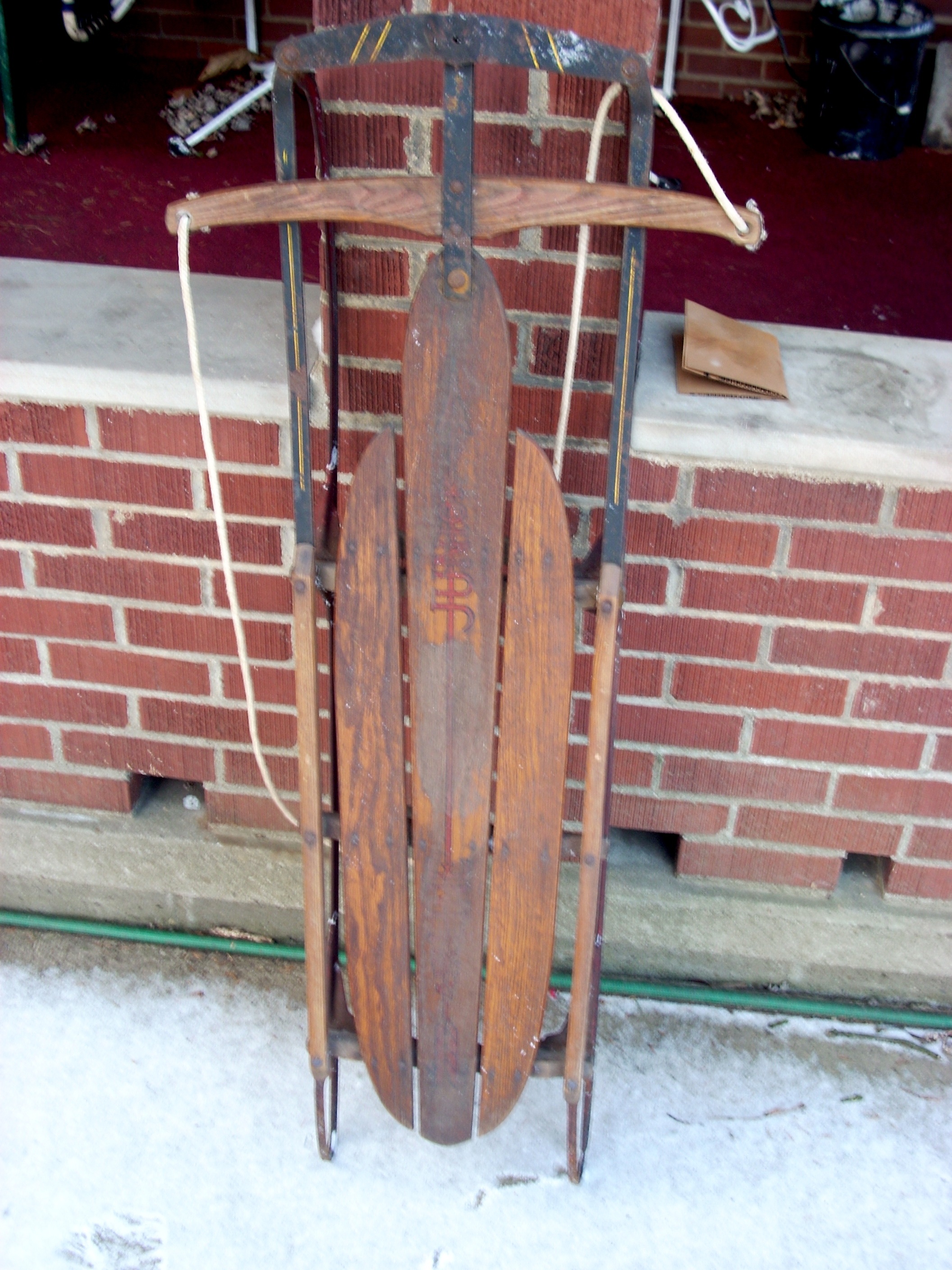 |
| David Henderson had taken up a wierd musical instrument called the Theramin. While we were in junior high he was invited to fly to California to play his Theramin on a TV show called You Asked For It. |
 |
By Spring 1955, the second semester of our seventh grade year, we thought we had things pretty well under control. We had made the step up from grade school to junior high football and basketball, had adjusted to the increased work load of junior high classes, and had learned to do the box, two step and waltz down at the Friday Night Club. We thought we were just cruising, finishing out the last months of school until Summer Vacation. Then, on March 1, a black and white movie opened down at the Fifth Avenue Theatre. It was called Black Board Jungle. It was about an inner city school and starred Glenn Ford as a teacher who tried to reach a bunch of hoodlums. The movie was good and won lots of awards. It didn't really relate to our experience, but it was entertaining. However, the movie had a sound track. It featured Bill Haley And The Comets playing a song called Rock Around The Clock. The movie stayed four weeks. The song blew the top off the charts and stayed number one for two months. Our parents were appalled. The Coraopolis Church Council tried to get the movie stopped and the song banned. We didn't realize it right away, but life in America had just changed forever. |
One, Two, Three O'Clock Four O'Clock Rock. Five, Six Seven 0'Clock Eight 0'Clock Rock. Nine Ten Leven 0'Clock 12 0'Clock Rock. We're Gonna Rock Around The Clock Tonight. |
| Bill Haley And The Comets followed that with another bombshell in September just as school reopened for our eighth grade year. It was Shake, Rattle and Roll. It also zoomed to the top of the charts. As we dutifully showed up at the Y for the Friday Night Club dances, it became immediately apparent that something no longer fit. None of the steps we had learned could be done with these new songs. The Mothers Club discussed this. They met with Herbert Snell and the junior high teachers. What to do? Ban the music? Cancel the dances? Mr. Snell suggested they just figure out how to dance to this new music and let everything work itself out. But no one knew how to dance to it. So, said Mr. Snell, let the kids figure it out. It's their music. Let them experiment. All over town, girls started playing the records and trying out new steps. When one found something that worked, she taught her friends and they built on that. Step by step, line by line, mostly the girls adapted to this new music and than taught the boys that Friday night. As Marianne remembers, "It was no big deal. We really just adapted the steps from the old jitterbug. We didn't get together at each others' houses or anything. Each girl just played the two records on her 45 rpm machine and worked out her own steps. Then Friday nights we'd show each other what we'd figured out." Haley and his comets released See You Later Alligator in November. They had three hits in the top ten and the Rock n Roll Revolution was officially underway. Decades later, cultural historians would call us the Rock n Roll generation. It was our own music. By the time our own kids were in middle school, music had splintered into Acid Rock, Heavy Metal, Hard Country and other sub types. By our grandkids' time, there was no music at all. It had been replaced by Rap. | 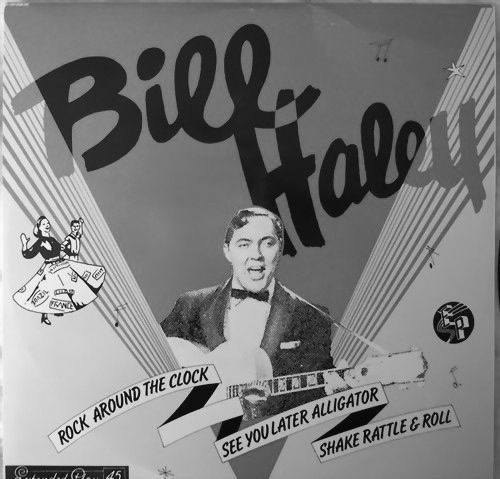 |
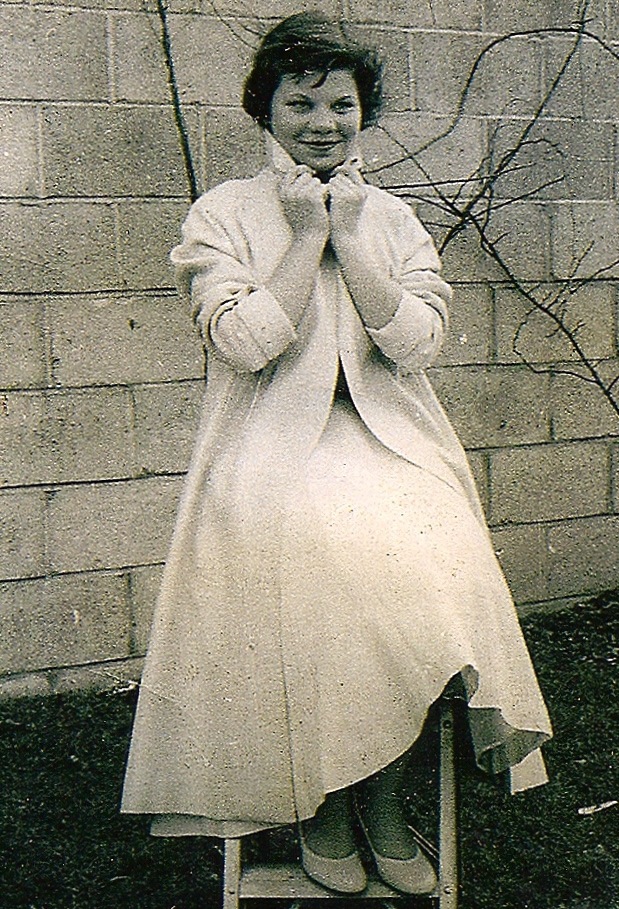 |
Other schools had tried to run dance programs and could never convince enough guys to participate to make it a success. Probably the reason Coraopolis never had a problem with that was girls like this. The chance to take one of our junior high women to the Friday Night dance, and dance with the others while there, was enough to lure any 13-15 year old male away from his television, sports, model building, science lab, pool table, or other pursuits. In this May picture Carolyn and Grace are in ninth grade. | 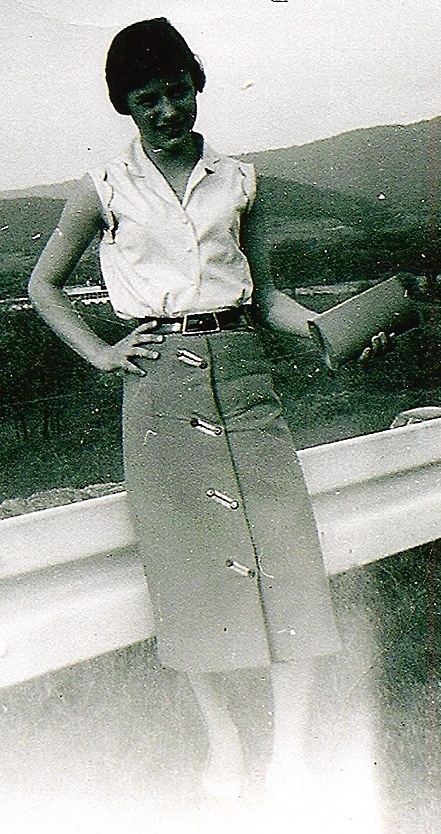 |
| Our first all 7th grade field trip was to Oakland. We left on Shafer buses at 7:30 a.m. and toured the Carnegie Museum, Sealtest Dairy, ate lunch at Isaly's, then toured the Phipps Conservatory Flower Show, Heinz Chapel, Pitt Cathedral and WQED. We got home at 5 p.m. |
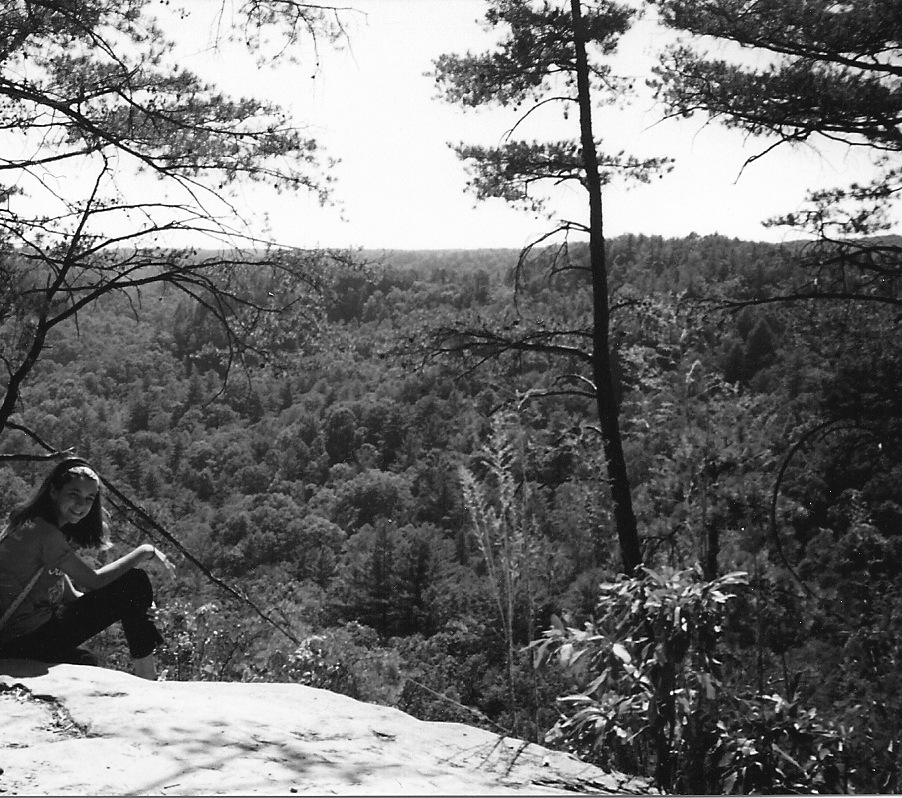 |
We continued to head for the woods on good weather weekends, but in junior high such a trip became a sort of date. Lots of times, after walking a girl home from a Friday night dance, a guy would invite her to come hiking the next day. There was something pretty romantic about a crisp Fall day with the leaves in full color or a Spring day with woods full of wildflowers. The high overlooks were almost always the destinations. Lots of pretty deep conversations occurred sitting up there just looking at the scenery and basking in the sun. Wildcat Rock, for instance, had enough different places along the quarter mile cliff that even if a dozen couples were up there at the same time, they could each find a private ledge. Junior high was really a pretty hectic place, with classes, clubs, sports and activities, and many of us invested additional time in babysitting, lawnmowing, paper routes or other pre-16 part time jobs. There was precious little time for long drawn out conversations. In addition to the exercise, fresh air and sunshine, these days in the woods were a chance for those conversations. On the way home, neighborhood stores on Montour or School Streets were convenient places to stop for a soft drink or Klondike. Kids heading back through downtown could even stop at Isaly's for ice cream. |
Some girls dropped out of Girl Scouts entering Junior High, but many stayed. With that great lodge in the woods, they had a perfect springboard to explore the hollow and out into Moon Township. By seventh grade, neither the boys nor the girls were much into wearing Scout uniforms, so they just hiked in "civilian" clothes. Long before it was the fad to bring bookbags to school, the girls used them out in the woods. Parents usually insisted the girls go in groups of at least three and often a Dad would go along. Unlike the boys, few girls had a burning desire to earn the highest rank possible, so by seventh or eighth grade they had acquired all the ranks and awards they needed. They could just relax and enjoy the out doors without collecting or studying anything. At the time, we took these days in the woods for granted. Two years ago psychologist Richard Louv published a major research study documenting how valuable such times were. He sees today's kids as suffering from Nature Deficit Disorder which manifests itself in various negative ways. Once again, we were lucky in ways we didn't even know |
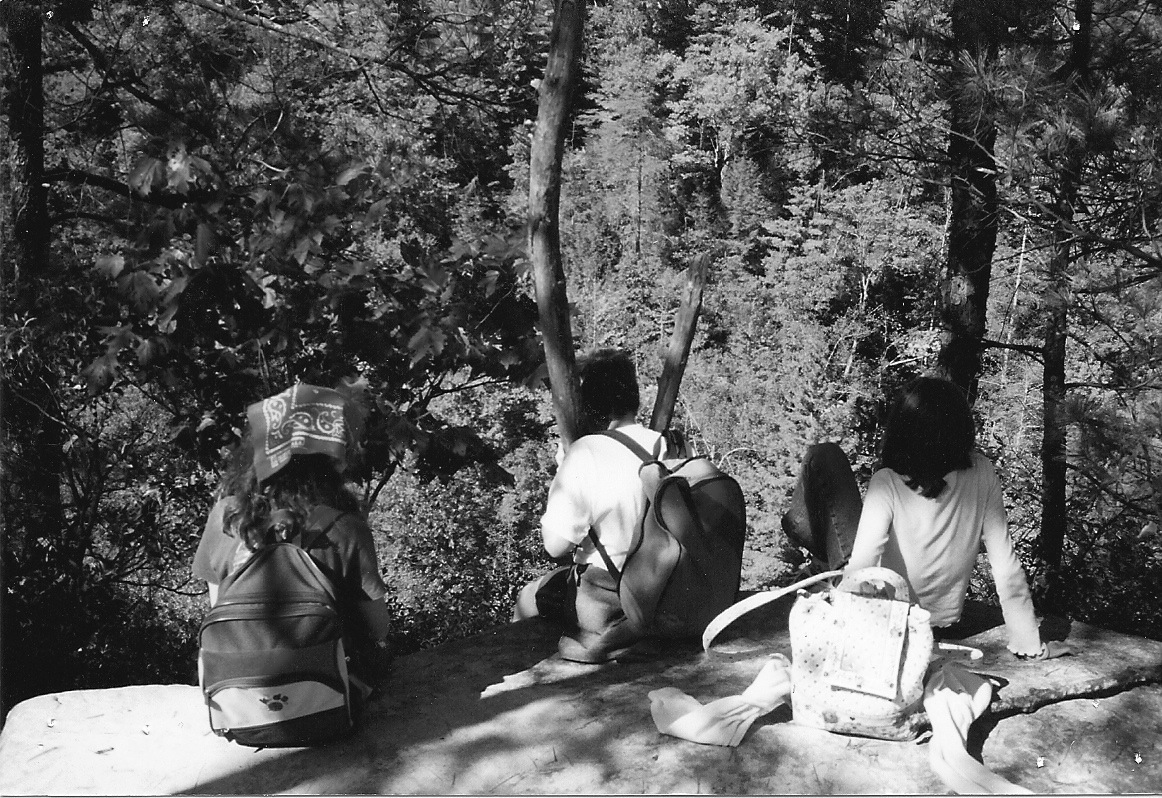 |
 |
Even though by junior high most of us had televisions in our living rooms, there were only three channels and they weren't televising sports like they do now. Year round, the woods had a beauty which drew us out there whenever we had free time. This scene along McCabes Creek below Wildcat Rock is in October was one of the more popular areas since it was so accessible to so many of us. It's downstream from The Chute, the best swimming hole within walking distance of town, so the trail up this valley was well travelled. Falls were dry, so the water levels in the streams were always down. See the rock ledges over to the far left, which in Winter and Spring would be underwater. |
| Springtime looked like this, the same creek, just above The Chute. Notice the creek is bigger here, swollen with April rains. We learned at an early age that the woods and the streams took on different personalities in each season, which kept them new and exciting. If we had been able to scale the cliff, directly above this scene we would have come out at the South end zone of the football stadium, by the gate that led to Charlton Heights. Just upstream around the bend is the Power Line Trail. |  |
| The second 7th grade honor roll, announced in December, consisted of Nan, Judy, Elaine, Marianne, Linda, Nancy, Louis, Claudia, Ann, Mary Kay, Bill, Grace, Marilyn, Eleanor, Janet, and Margaret. |
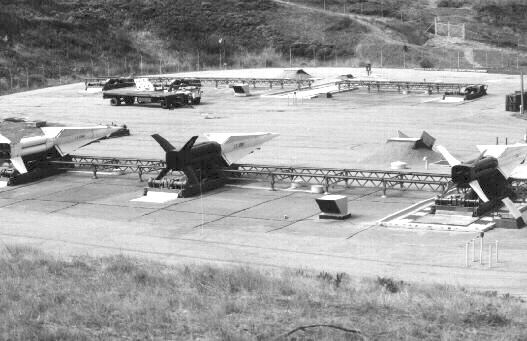 |
Sometimes guys would leave girls behind and hike into areas that were dangerous or illegal or both. The lure of adventure at ages 12-14 was too strong to resist. One of the favorite hikes was to the Nike Base. Since the main entrance and approaches were heavily guarded, we figured out that the only way to get there was hike out the Montour Railroad tracks past Ewing's Mill, cross the Montour Creek, and very quietly ease up through the woods to the top of the hill. Crawling the last 100 yards on our stomachs so as not to present silhouttes against the sky, we could look directly down on the launching pad. Most days, there was nothing but a bare concrete pad, looking like a basic parking lot. But we knew they conducted frequent drills, so we kept hiking out there. Over about three years, we got lucky a few times, which allowed us to take these photos. When a drill was in progress, trap doors opened. First the steel rails rose into position. Then the much bigger doors opened and the missiles rode up on elevators. They were stored horizontally so men could load the war heads underground. |
Once the missiles reached the surface, they would be raised to vertical position, ready for firing. A countdown began. But only being a drill, after a minute, the countdown would be halted and everything would happen in reverse until missiles and rails were back below and once again it looked like a bare parking lot. 12 missiles at a time could be brought to the launching pad, but there were 120 in all. Each "silo" held 10 stacked one below the other. The warheads were stacked separately, to be loaded just before the missile was rolled onto the elevator and sent to the surface. If Russia attacked either with missiles or planes, we could launch these missiles from this and 100 other sites and take the incoming threat out of the sky. These missiles carried nuclear warheads, so one could take out an entire incoming wave. The Coraopolis Nike Base was for defense of the steel mills. Looking back on it, we had to be out of our minds. We could have been arrested, 12 - 14 years old or not. We would have been in trouble, not with local police, but with the U. S. Air Force. And possession of photographs would certainly have violated national defense laws. Once the base closed, such photos were declassified, but we still checked before putting them on here. |
 |
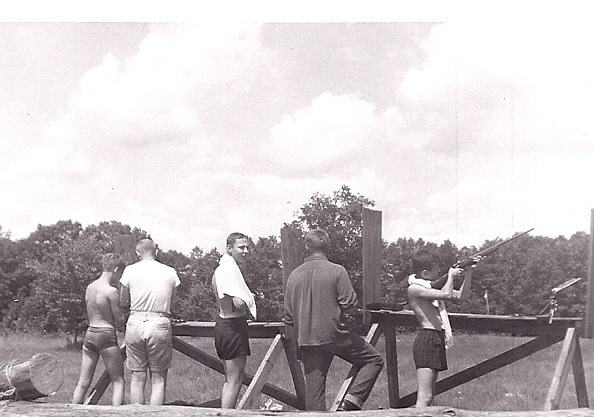 |
Many of us continued to participate in Boy Scouts and Girl Scouts. Here several boys are practicing their rifle skills at the skeet range at Camp Tionesta. From left are Vite, Mr. Ferree, John, Jim and Patrick (who by this time had moved to Moon). There was also a rifle range with the standard small targets and powerful scopes like the high school rifle team would use. Three boys are in their swim suits and towels because they've just come from the waterfront. |
| This is a very special photo of an initiation ceremony into the Order of the Arrow, a Boy Scout honor fraternity. Boys qualifying for the Order of the Arrow have demonstrated exceptional outdoorsmanship, leadership, character and adherence to Scout ideals over several years. That's John in shorts at left. He's not waiting to be inducted; he has escorted the initiate to the ceremony. This photo is taken at Camp Tionesta, near Cook's Forest in Northern Pennsylvania. Normally, OA ceremony photos are not be displayed publically; we received permission from the national office to show this one only because it is over 50 years old. Boys did not apply for OA membership. They were nominated without their knowledge, observed, and chosen. On their last Friday in camp they would be approached by Indians in full dress, escorted into the woods, and undergo a full day of instruction and preparation for the ceremony that night. Membership is for life. The OA sponsors many worthwhile projects but does so in secret so receives no credit. Except for Boy Scouts and their parents, this is probably the only glimpse anyone in Coraopolis has ever had of an actual Order of the Arrow ceremony. No matter what else he achieves, a boy cannot be chosen for the Order unless he has successfully completed several years in summer camp. | 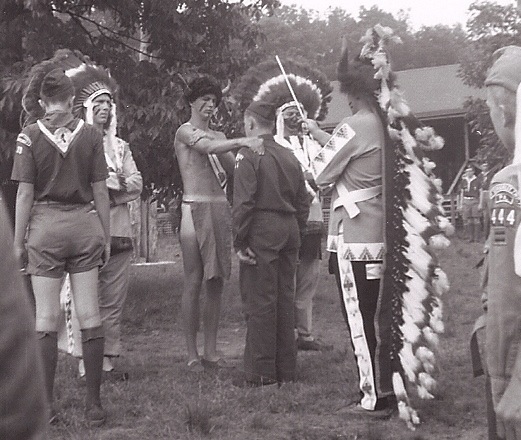 |
| During our 9th grade year, Harvey Kelly was advisor to the monthly newspaper The Question Mark. Carol was editor, with a staff of Nancy, Gerry, Bill, Joyce, Mary Ann, David and Barbara. |
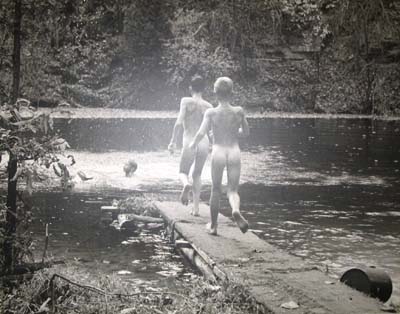 |
We had hot Summers growing up and swimming was a favorite recreation. There was the Y, but it was indoors. There was Dravo, but it was a long bike ride and you needed a pass. For lots of us, there were the old swimming holes. The guys liked the Montour Creek "Deep," two miles hike from Groveton. Girls preferred the McCabes Creek "Chute," a quarter of a mile from Wildcat Rock. Development has diverted much of the flow so the Chute does not have as much water as it used to, but The Deep and several other Montour Creek holes are still used today. | 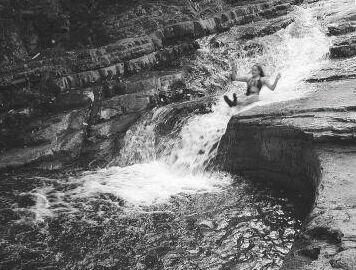 |
| When we were in 7th grade none of our girls were elected to any FHA positions, those being held by 8th and 9th graders. By 8th grade, though, our girls were moving up in the organization. Elaine was elected vice president; Janet reporter; Mary Kay historian; Nancy parliamentarian; Lynette song leader; and Nan county representative. |
Some of the highlights of our junior high days were the field trips we took. Our first big one was the all seventh grade trip to Pitt. We toured the Cathedral of Learning (right), visiting each of the Nationality Rooms with a guide who explained the architecture and decorations, being amazed as the Physics prof on the top floor showed us how the the building would sway 12 inches in high winds, and gazing in awe at the medieval looking first and second floors with their gothic architecture. We stopped at the Heinz Chapel and the WQED studio, where we watched Mr. Rogers' Neighborhood being filmed. After lunch at the Pitt Student Center, we spent the afternoon at the Carnegie Museum. The girls loved the whole floor of Fashions Through History, but the boys preferred Dinosaur Hall, with an array of dinosaur skeletons second only to the Smithsonian Institute in Washington. Other trips would take us to the Buhl Planetarium, Duquesne Incline, Pittsburgh Zoo, Rockwell Steel, Montour Railroad, Coraopolis Record, Duquesne Light, Conway Yard, Dravo Corporation and the Greater Pittsburgh Airport. Dr. Rogers took those of us who were interested on a special Friday night trip to Allegheny Observatory, where we were able to look through the world class telescopes at the planets. Specific classes would also take trips to local machine shops, Hendel's Photographic Studio (for the darkrooms), the Coraopolis Water Company, and fashion merchandising sites. The boys particularly enjoyed going aboard the tugboat with Mr. Jewart. Mr. Snell's philosophy was that education cannot be confined to a classroom or a building. He wanted us "out there" in the real world. None of these field trips cost us a dime except for the lunch we were asked to bring. |
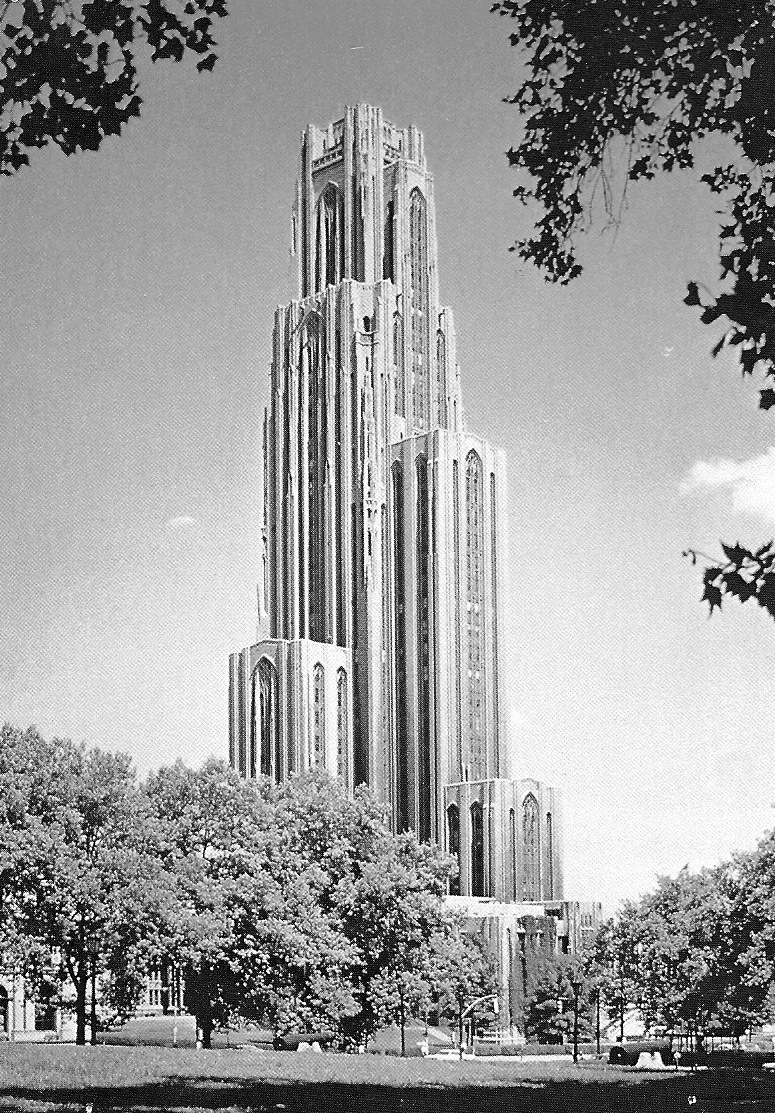 |
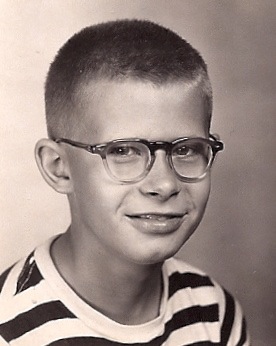 |
Dr. John Bolki, the 9th grade science teacher while we were in 7th and 8th grades, had for a decade also coached the junior high and elementary school science fair teams. He had already produced first place winners at both the county and state levels and would be hired away by Mt. Lebanon before we reached ninth grade. But in the meantime, Bobby (left), Steve (right) and Danny embarked on a long range project to find a cure for Poison Ivy. All three of them had suffered from several bad cases of it so they had personal scores to settle. But it was also the kind of project Dr. Bolki thought had the potential to grab judges' attention. It combined biochemistry, botany and lab testing; could be explained in cross examination by 13 year olds, and could be done with the kind of equipment possessed either by the junior high or by the boys themselves in their own home labs, which they had pieced together from their grade school chemistry and microscope sets. During our seventh and eighth grade years, after school in Bolki's lab and at home evenings and weekends in their own, they plugged away step by step, through trial and error. | 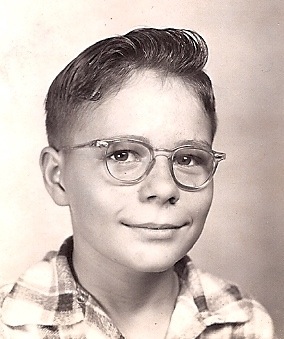 |
| Dr. Bolki used his connections at Carnegie Tech, Pitt and Duquesne University to get specialists in biochemistry, organic chemistry, botanical pharmacy and biomedical research to help. As those schools upgraded lab equipment, discarded pieces found their way to Coraopolis. Saturday morning trips to town allowed certain high level tests to be run with state of the art equipment. Once they were able to use the same Pitt lab Jonas Salk had used in his Polio Vaccine research. |  |
Danny was still winning state science fair competitions with the McCabes Creek studies he had begun with Dale in grade school, so when it came time for the actual competition Bobby and Steve entered the Poison Ivy project. They won three straight years at Buhl Planetarium and went on to State, where they won first place in eighth and ninth grade. With Danny's wins, that gave Coraopolis Junior High state championships in both Microbiology and Biochemistry two years in a row. |
| In 9th grade, George was class president and Lynette secretary. They represented Cory at the state convention in Scranton. Joe Jewart went along as advisor and chaperone. |
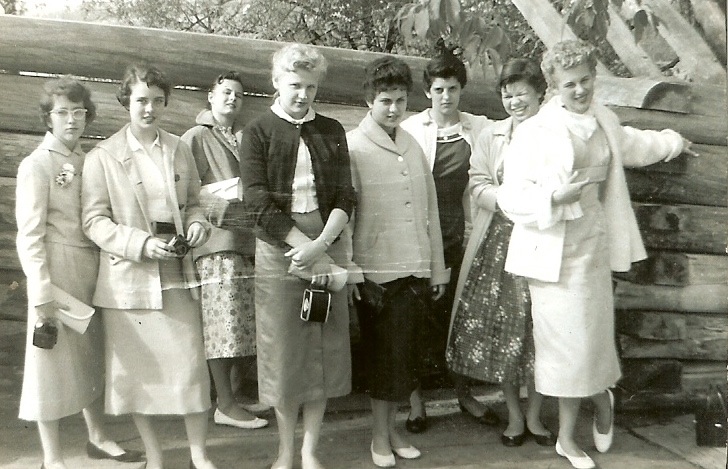 |
It was the overnight trips we took that really excited us. Most of those were taken by individual classes, but one we all remember is the Ninth Grade Trip to Eastern Pennsylvania. This was taken in the Spring as part of the year long course in Pennsylvania History. There were 120 of us, and we took two 60 passenger Greyhound Buses. We left at 7:30 a.m. and headed to Uniontown, where we took route 40 to Ligonier and Fort Necessity. The trip was a big deal. We had several meetings and took home handouts on what was needed. We were to bring a larger suitcase to stow under the bus and a small carry on bag to hold a camera, lunch, soft drink, book or magazine. Notice how these 14 year old girls are dressed. Today, girls would be in t shirts, blue jeans and Ughs. No wonder our grandsons look at old pics, drop their jaws and say, "All the girls were so gorgeous! How come our girls today aren't this attractive?" A lot of work went into this look. Back in 1960, girls considered their appearance a top priority, and it showed. |
Fort Necessity was a major battle during the French & Indian War. This 1750s war had begun in Pennsylvania and been fought mostly here and in New York, so our class had spent almost a month studying it. Fort Necessity had been built by Washington and his Virginia Company as headquarters while they built The National Road (now route 40) to connect Virginia to the Ohio Country. The French had attacked this fort and forced him to surrender, although he and his men were allowed to retreat back to Virginia. A year later, General Braddock with Washington as his second in command returned with a much larger force. Braddock was killed but the Virginians won, and would eventually drive the French out of Pennsylvania. We spent three hours at Fort Necessity and ate lunch at the picnic grounds there. These dangerous looking characters pose on one of the cannons still in place. One of the big issues on the trip was who would ride which bus. Kids tried to trade back and forth so they could sit with their friends. The adults resisted this. They allowed some trading to go on but not a lot. The same was true with roommates at the hotel. There had been considerable pretrip negotiation about who would room with whom, and once on the way, adults were reluctant to permit much trading back and forth. |
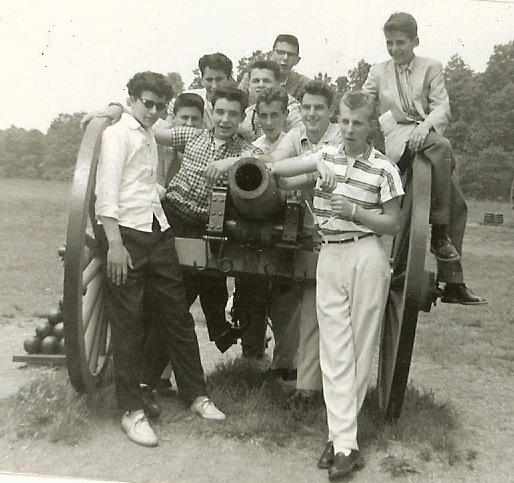 |
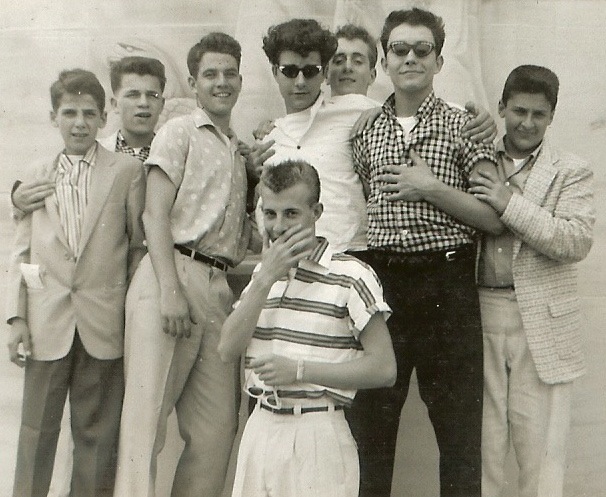 |
Here the same Wild Bunch poses in front of the monument commemorating the 1755 British victory. Notice the clothing. Three of the eight wear sport coats, no one has on jeans, and all eight have on collared shirts, seven button downs. Today, students would make this same field trip in torn jeans and t shirts. In the photo above notice everyone wears dress leather shoes. Today a similar group would all wear basketball shoes or hiking boots. |
Janet (left) and Lucy pause for a photo before reboarding the bus. Who would have thought the lovable looking girl on the right would have spent so much time picking on poor defenseless Nick, Danny and Bill? Notice the white gloves, matching hat and purse, and tailored suit. We might have grown up in a gritty steel town, but our women knew how to dress. No green hair, rings in their noses or tattos for our girls. Out of our class of 103, 79 went on this field trip. Only four chaperones, two per bus, went. They were Frank Letteri, Joe Jewart, Jean Schultz and Mrs. Holsinger. And the worst issues we had were a few people staying up in their rooms after curfew and one guy throwing a pickle out a bus window. |
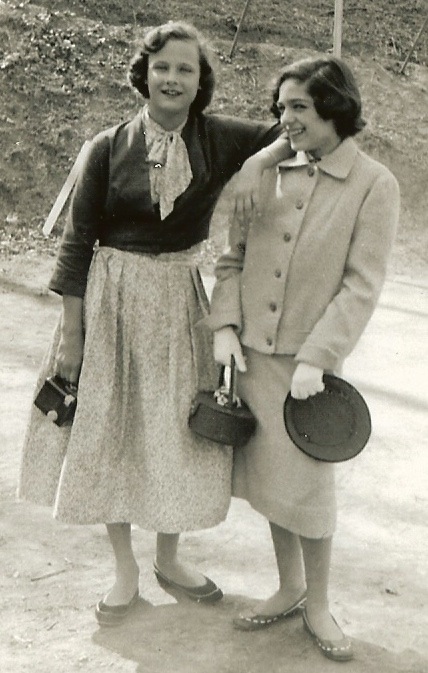 |
 |
Dave and Jean strike a pose before one of the statues at Gettysburg. Check out that fine straw hat of Jeannie's. After East Stroudsburg State College she would become a career flight attendant for United Airlines and move to Seattle, Washington. She flew for 37 years and retired as of New Years Day 2002. Dave went on to Notre Dame and pursued a business career. |
| Janet with her trusty Brownie Kodak. This was Janet's first camera, but it just whetted her appetite. She would go on to earn a doctorate in psychology and become a forensic psychologist. But she would also pursue photography as a parallel career. Today she displays her photos on her own website and sells them commercially. | 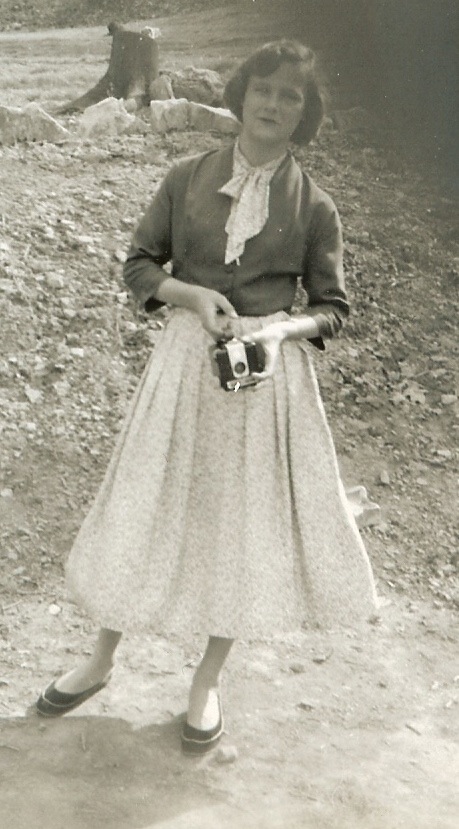 |
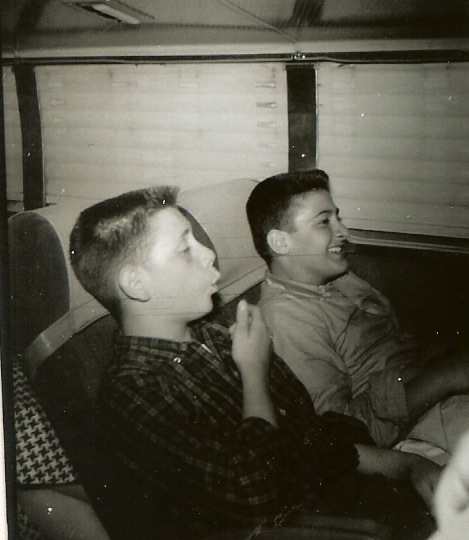 |
Two Joes, O and C, clown around on the bus between Fort Necessity and Harrisburg. Notice they have the blinds pulled down to block the sun. The only time we ever got to ride Greyhound buses was on school field trips, so it was always a big adventure. We especially liked travelling on back roads through the mountains, like this trip, because the steep and winding roads caused the bus to rock back and forth. |
| By mid afternoon we pulled into the Hotel Harrisburger. For many of us it would be the first big city motel we had stayed in. Some of us had travelled pretty extensively on family vacations, but always stayed in cabins and motels. With its downtown location and its many floors, this was something new. We ate dinner and breakfast here at the hotel and they packed box lunches for us the next two days. Teachers took turns monitoring the halls all night to make sure everyone stayed in their rooms and quiet. We had 12 adults on the trip and 120 kids, so there was one adult for every 10 kids, pretty heavy supervision. We were supposed to have lights out at midnight and the adults tried to monitor this by watching light coming from under the doors. However, some of the girls figured out that a towel could be placed along the door bottom and block the light from showing through, and many students stayed up late the first night. |  |
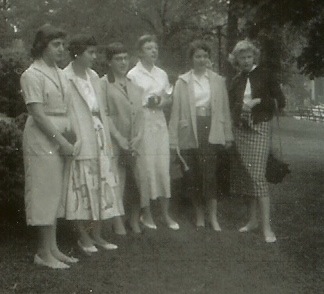 |
xxx, Dorothy, xxx, Gloria, Carol and Honey pause on the lawn of the hotel before boarding the bus for Hershey. We were all impressed with the landscaping both in Harrisburg and Hershey. We had our parks and lawns, but nowhere in downtown Coraopolis did we have such extensive expanses of manicured greenery. |
| The movie star in the glasses giving George a sarcastic look is Karen. That's George turned around in his seat asking her where she's been all his life. Above him from left are Bob, Carol, Lucy, Gloria and Jim. Notice Jeannie's straw hat above Gloria's head in the luggage rack. This back of the bus revelry is occurring on the way from the state capitol to Hershey. | 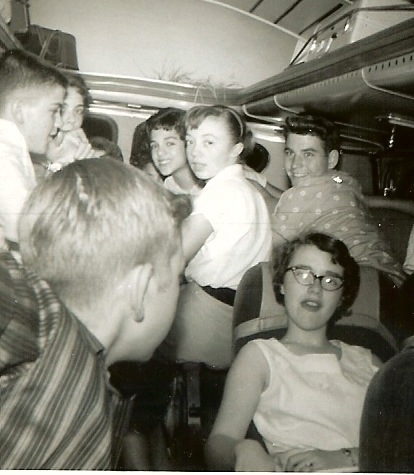 |
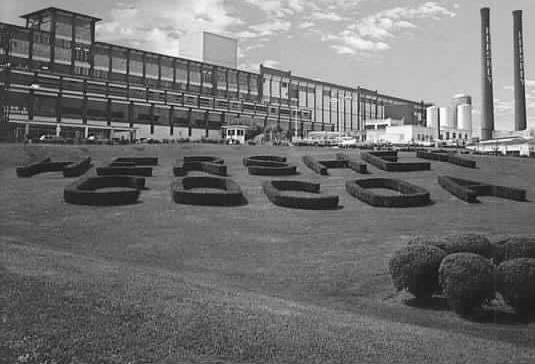 |
On the morning of the second day we toured the State Capital Building and other important sites in Harrisburg. We ate our box lunches on the bus on the way to Hershey. The first part of the afternoon we toured the Hershey Chocolate Plant. Then we had two hours at Hershey Amusement Park. George lost his wallet in the park and we had to spend time looking for it. We finally found it at the Cuddle Up ride and headed for Gettysburg. We spent the evening touring the battlefields, getting out at a few of the more important monuments. By the time we got back to Harrisburg and the hotel and ate dinner, most of the students were exhausted and very few bothered with the towel trick the second night. |
The third day we drove out into Amish country and saw the horsedrawn buggies and men working the fields with 18th Century equipment. We headed home on the Pennsylvania Turnpike and stopped at Midway, famous halfway plaza with Howard Johnson Hot Shoppes. The hotel box lunch on this third day came with fried chicken and a pickle. One of the guys did not like pickles so he wound down his window and threw it out, where it smashed across the windshield of a passing motorist, who got the bus license plate and called state police, who pulled the bus over and hauled the culprit outside for chastising. Several of the girls invented a kissing game for dark turnpike tunnels, but there were also a few loud slaps heard. |
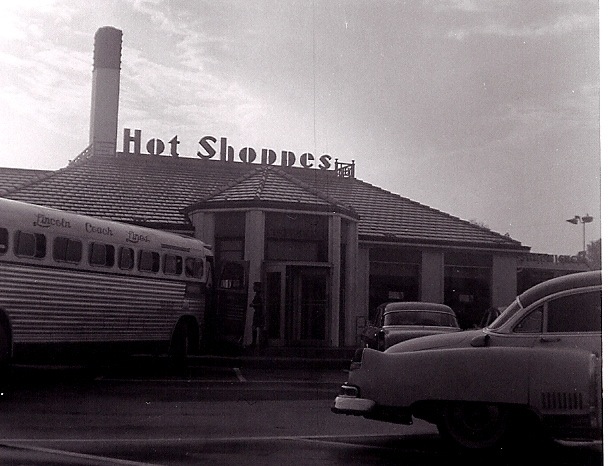 |
 |
Bill surprises Carol with a photo in the dark as we drive home through a ferocious thunderstorm on the turnpike. That's George sound asleep on her shoulder. Notice the string of pearls around her neck. Have fun, embrace new experiences and learn everything possible, but always, always, always remember Elegance, Class and Dignity. We finally got home a little after midnight and had to unload our suitcases from the under bus compartment in the rain. |
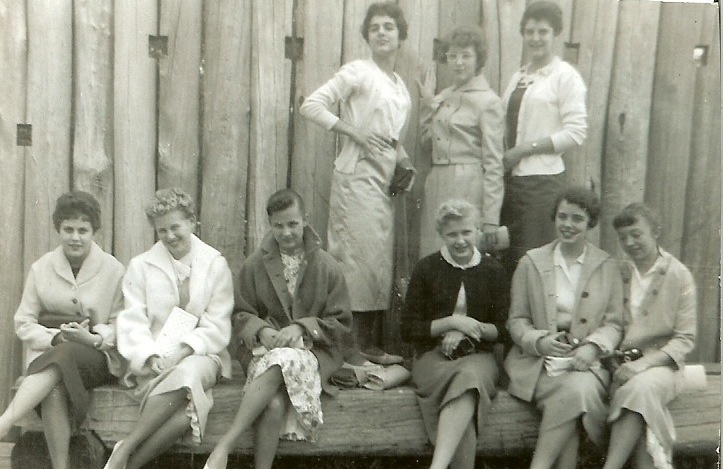 |
This is a powerful picture. It was only a random group of 14 year olds on a three day field trip, but from these nine girls would come the editors of the high school yearbook and newspaper, the national president of the Future Homemakers of America, three star athletes, two cheerleaders, two beauty pageant winners, seven National Honor Society members, and, beyond that, seven college graduates, three teachers, two coaches, a psychologist and a cancer specialist. Looking back with hindsight, if Harry Houtz and Herbert Snell spent all their time hand crafting a school system grades K-9 to produce mature young people who would contribute in a significant way to their society, they certainly succeeded. |
| In this suspicious photo, Charlene shows a little leg while Eleanor looks through the keyhole to see who's knocking on the door. This is in the hotel room at Harrisburg. There wasn't much chance it was a boy knocking on the door, since the boys were all in a separate hotel several blocks away and there were female chaperones sitting out in the hall in the girls hotel all night. | 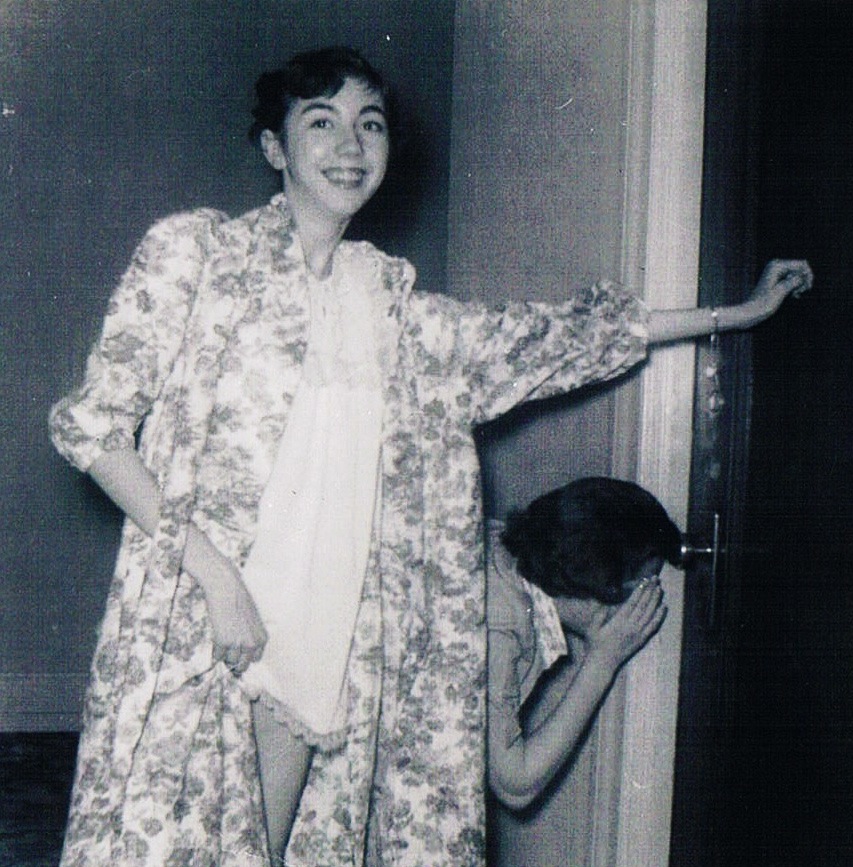 |
| Bill, Ann and Gerry represented us at the Junior Historians Statewide Convention in Harrisburg. Mrs. Frances Russ was their chaperone. |
| We continued to finish each year with a trip to Kennywood. By now, we had graduated from tamer rides to roller coasters, dark rides and thrill rides. We took swim suits and towels and spent the afternoon at the Kennywood Pool, largest in Pennsylvania. We played on the state's best miniature golf course and tried to get a good seat for the daily show, where we got to see trapeze acts, men shot out of cannons, women diving from high towers into small tanks of water and various performing animals. We'd go out for a rowboat ride on the lake, where we usually ended up in a splashing duel with classmates in other rowboats. Girls would let themselves be talked into riding the Ferris Wheel, then spend the whole ride begging the boys to stop rocking the seat, especially when paused at the top. Noah's Ark, shown at right, was a favorite with its rotating barrel to walk through, circulating floor to walk across, continual exaggerated rocking of the ship, and sudden jets of air coming up through the floor. But above all were those great roller coasters : the Jack Rabbit, Racers and Pippin. First we'd ride each of the other 30 rides in the park, then we'd spend the evening riding the roller coasters over and over until it was time to go home. |  |
 |
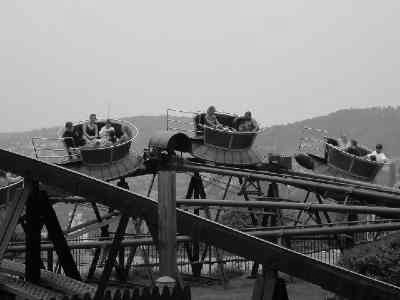 |
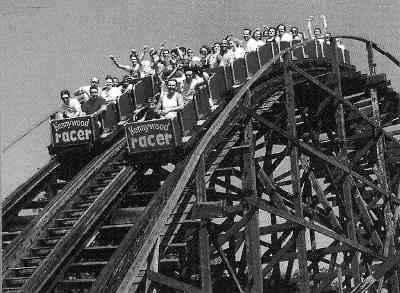 |
Nancy, Margaret and Janet represented Cory at Schenley in the Western Pennsylvania Algebra Competition. |
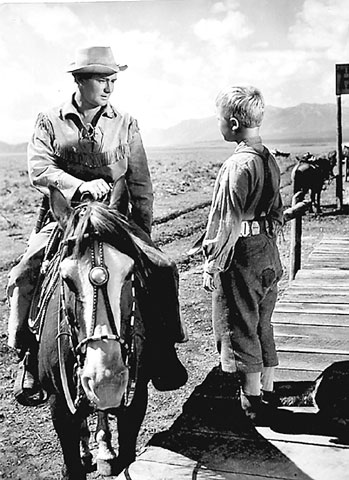 |
Entering Junior High two movies hit town which ended our cartoon era. Ivanhoe (right) taught us about Normans, Saxons and Medieval England. Girls loved the chivalry and fine ladies honored by their knights. Boys loved the violence of the jousting tournaments and the crusade of Ivanhoe to undo the evil king. Then came Shane (left), still to this day considered one of the top three Westerns ever made. A true story about the Johnson County War in Wyoming, it gave us an accurate picture of the open range, homesteading, and the moral struggle of how to combat Evil without becoming part of it. We were entering the Golden Age of Westerns, with High Noon in eighth grade and Bad Day at Black Rock in ninth. | 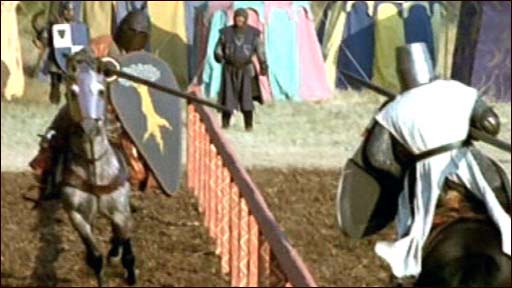 |
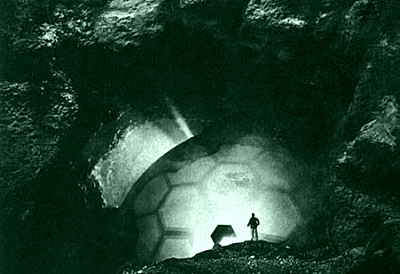 |
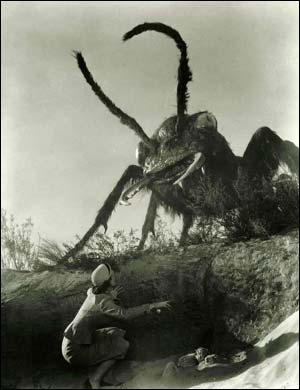 |
| But we were also being invaded. The midfifties were the Golden Age of Science Fantasy. At least once a month a major sci fi hit played at the Fifth Avenue. Above are (left) Invaders From Mars (center) The Beast From 20,000 Fathoms, and (right) Them. The boys loved these films. We usually cheered for the monster. Before the days of computer special effects and million dollar budgets, Hollywood used magnifiers and artful lighting to show giant insects and lizards. But the greatest of all the invasion epics was War of the Worlds, a wide screen three hour long color spectacular about full scale war between Earth and Mars. In the other films we could relieve the tension by laughing at the insects or lizards, but the special effects in War of the Worlds broke new ground and the Hollywood interpretation of the H. G. Wells script earned it Movie of the Year honors. Many of us went back and saw this one several times. The Fifth Avenue held it over for two weeks, almost unheard of in an era when plenty of movies were made and they usually ran one Sunday and Monday, one Tuesday and Wednesday, and a major hit Thursday, Friday and Saturday. War of the Worlds would later be ranked one of the top films of the century. | 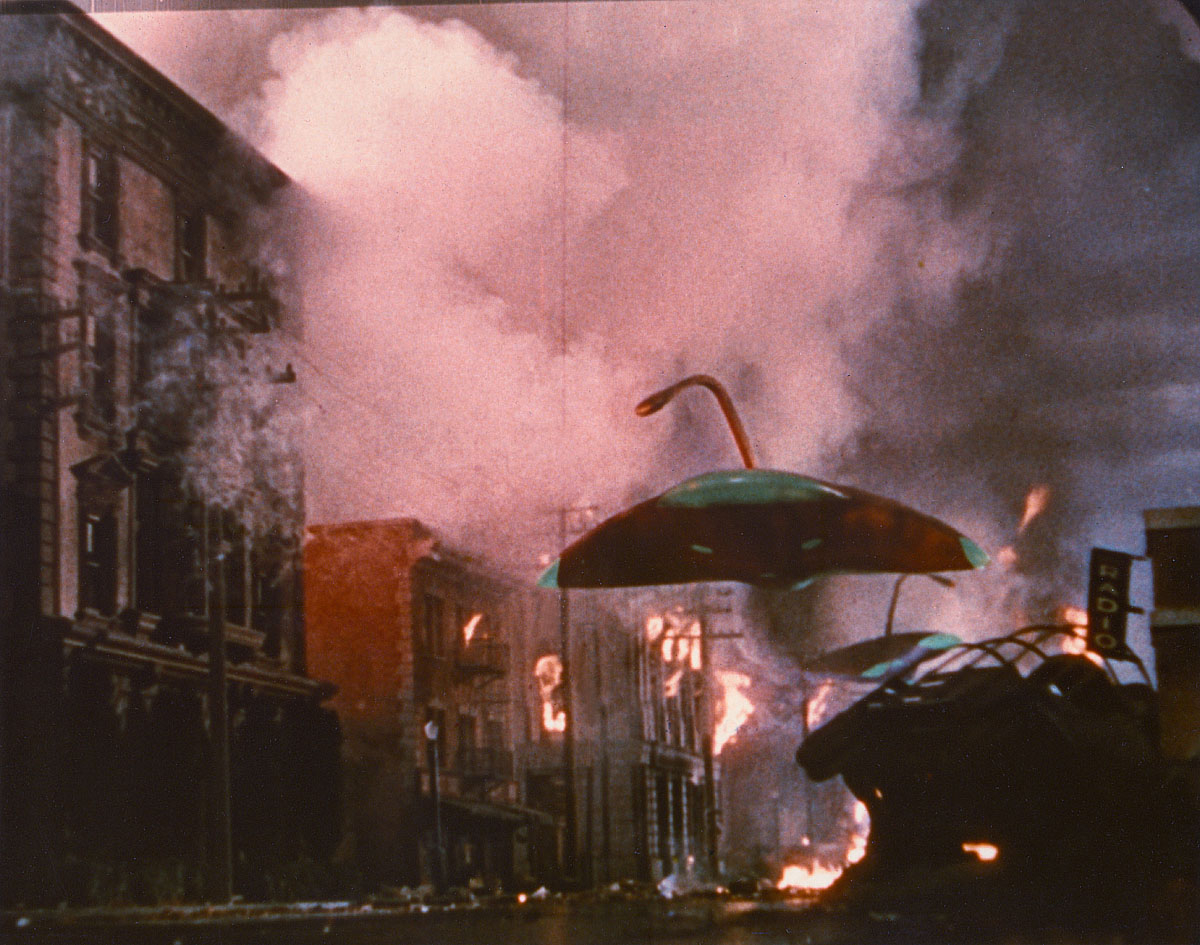 |
While we were still in junior high, Louie had already won a role in South Pacific at the International Theatre in Crafton. |
| We were way past Kukla Fran & Ollie and Roy Rogers on television. By ninth grade we were watching 77 Sunset Strip (left) and Dragnet (right). The characters of Kookie ("Kookie, Kookie, Lend Me Your Comb") on Sunset Strip and Jack Webb on Dragnet were icons. They were on Thursday nights. This conflicted with our need to study for Friday tests in Science, Algebra and History, so we learned to multitask. I Remember Mama, Father Knows Best and Ozzie & Harriet were on Friday night; Gunsmoke, Have Gun Will Travel and the Colgate Comedy Hour were on Saturday night; and the Texaco Hall of Fame Sunday, all in black and white. We had three channels. |  |
Carol had her own tv show when we were in 9th grade --- a four episode WQED series entitled It's Fun To Babysit. |
| We all took art in elementary school. Coraopolis had a travelling art teacher who split her days among the three buildings so every student had art twice a week. This continued with required art classes in junior high. When Mr. Houtz asked the art teacher to recommend to him any students who might have special talent, she listed Marilyn, David, Louie and Kathryn. Mr. Houtz arranged for those students to participate in a special art enrichment program every Saturday morning in Oakland. The program began when they were still in grade school but continued during their junior high years. Like sports, music or science, art talent takes years to develop. All that time invested began showing results in high school, as they won honors in various art shows and were recognized not only as the best artists in Coraopolis, but among the very best in Allegheny County. Louie and David would channel their artistic talents into careers as architects. Marilyn was the only one of the four who would continue in pure art, mainly as a painter. She is shown here with two of her award winning works. | 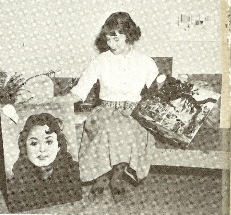 |
| Our grand goodbye to our beloved Friday Night Club was the Farewell Dance May 31, 1957. It was held in the junior high gym, decorated with blue and white crepe. Marianne and David were crowned king and queen. The royal court included Janice & Joe, Carol & Gerry, Carolyn & Nick, Grace & Bob, and Linda and Frank. The dance lasted from 7 to 10. High school dances would last from 8 to 11. |
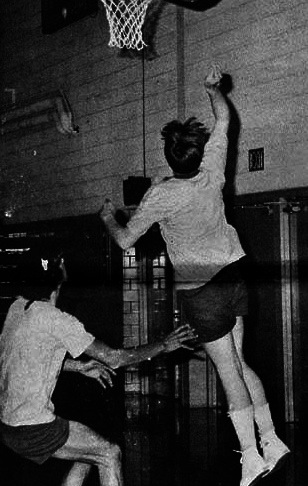 |
As a former high school and college basketball player and championship coach at the high school, Herbert Snell understood very well the need to develop a strong junior high program, especially since the grade schools lacked their own gyms and could not run comprehensive teams in grades 4-6. Mark Holpfer's junior high program kept 24 boys a year, 12 on the A team, dominated by 9th graders, and 12 on the B team, dominated by 8th graders. To develop 7th graders, Snell hired Joe Jewart, who had played in college, to create and coach a 13 and under AAU team, with its own schedule, practices and budget. Then he worked with the YMCA to create an intramural program with eight teams of seven boys each. So a boy could try out for the junior high team, but if Holpfer cut him, he could try out for the AAU team, which held tryouts after the JH cuts. If the boy did not make the AAU team, he could sign up for the intramural league, which played two games a week. Thus, we had 92 boys playing basketball in a junior high of 300 students, a very high proportion. Boys could polish their skills in the intramural league, move up to the AAU team, and keep trying out for the junior high team. The two junior high teams played two games a week before what crowds could fit into the junior high gym. The AAU team played its games in weekend tournaments in Pittsburgh and outlying areas. A team in the intramural league had two games a week. Where a boy ended up depended heavily on whether he grew early or late, since Holpfer preferred tall bulky players. Those who got their height early, like Ange, left, in a game at Moon, could prosper in Holpfer's system. Those who did not but had skills could prosper in Jewart's AAU program, where, truth is, they got better coaching and played more games. Those who loved the game but were still working on skills had the YMCA League. Snell did not allow any boy to play on both the school and the AAU team. This build a very broad talent base. It meant that at the high school some very good athletes would not make the varsity. Snell also did not allow the Y/AAU team to ever scrimmage the JH team, to avoid rivalry issues within the school. |
Cheerleadees when we were in 9th grade were Lynette, Carolyn, Lucy, Grace and Janet. |
| The Y/AAU team, coached by Joe Jewart, practiced every evening down at the Y and played its weekend tournaments at places like Mt. Lebanon, North Allegheny, North Hills, Charleroi and McKeesport. Jewart had them using 1-2-1-1 and man to man full court presses, 2-3 and 1-3-1 offenses, 2-3 and 1-3-1 halfcourt zones and a three lane fast break. Since the bigger and more athletic boys were on the junior high team, Jewart had to rely on his smaller players' quickness, shooting and speed, but he was a good coach and his team was in the semifinals and finals of almost every tournament, which usually drew from 16 to 32 teams. In the March 13 and under championships at Pitt Field House, Cory beat Avonworth, Springdale and McKeesport to get to the finals, where Brian Generalovich scored 30 points to lead Farrell to a 56-50 win. |  |
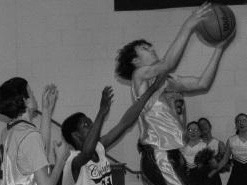 |
This system of JH, Y/AAU and Y Intramural League was a sports adaptation of Snell's self selecting academic grouping system in scheduling Junior High classes. He liked to allow students to select their own level according to talent and effort. In basketball, it allowed every interested boy to play, but placed them at the level best suited to their size, skill and intensity. The only flaw in the system was that Jewart was the better coach but was limited to the Y/AAU team. Mark Holpfer was a football coach who selected basketball rosters based primarily on size and secondarily on strength and roughness. Several boys on the Y/AAU team had more quickness and shooting ability and floor instincts, and their full court pressing and fast breaking style would have been assets on the JH team, but their size got them cut immediately. Since Cory did not field AAU teams at the higher levels, some of its better Y/AAU players were drafted by other AAU teams and they were lost to the high school program. |
| When we were still in 9th grade, Nick, Ange, Jim, Ross, Bill, Paul, Vite and Pete were called up to the high school B team to fill out the roster. |
| Football players were not so lucky. There was no AAU for football. Neither the YMCA nor anyone else in town had the facilities for a weekly intramural league. Due to the larger roster and expensive equipment, a B team was not possible. So for a 12 year old 7th grader, it was either beat out a 14 year old ninth grader for a spot, or sit out. Holpfer did not usually cut a boy. He would let him hang around. But the boy would simply be ignored and had zero chance to ever get in a game. There was no skill development. Faced with this, many talented boys with high potential simply dropped football and never returned. When we were in high school, struggling with 16 Iron Men, our lack of depth was a major issue, and this lack of foresight in the junior high came back to haunt us. | 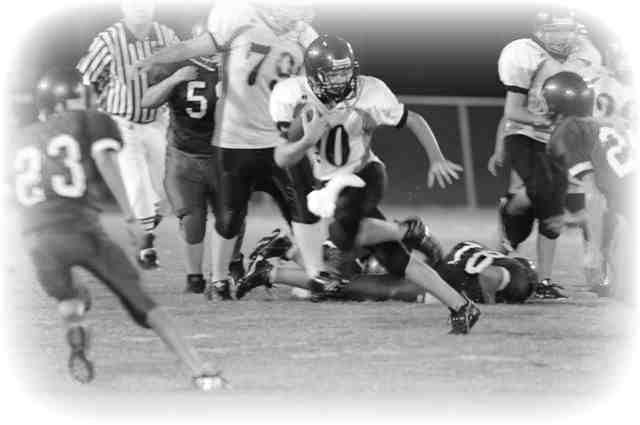 |
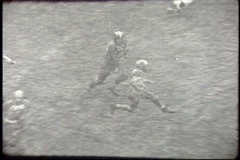 |
What saved us --- for a while --- was that we had so many good players we could ignore or lose half of them and still have enough to win. Playing in backyards, alleys and streets, an awful lot of us had developed our skills. One player who emerged early was Nick, seen at left as an eighth grader running in a muddy home game against Stowe's Skip Tatala. Even in junior high, Nick showed speed, quickness, strength and stamina. Defenses could not overload on him because of Jimmy, Stan , Jerry and others. But the thin bench made life difficult when Bill suffered his concussion early in the McKees Rocks game and was lost for the season and in big games when we had no backups to let the starters catch their breath. A lot of our wins would have been by much wider margins had we had some depth. |
Nick was the only basketball player to average in double figures when we were in 9th grade---he averaged 14.3 ppg. |
| We didn't outgrow our Erector Sets when we came to junior high. We just expanded them with parts from the Hardware, Western Auto, Bell Motor Parts (David's father's business), castoffs from the local mills, and items we saw in the ads in the back of our fathers' Popular Mechanics, Popular Science and Popular Electricity magazines, which we ordered by mail. We learned that with a Delco car battery, a small air compressor, several coaxial cables, some shunts and splitters, a few shock absorbers modified in various ways, duct tape, plastic pipe sections, plumbing supplies, duct tape, and a can of ball bearings, we could build just about anything. Computers and laser beams hadn't come along yet, but we could mail order photoelectric cells and electric eyes, basic fusebox circuits, and various television and record player parts. All those years of wiring model trains in grade school paid huge dividends as we used that knowledge to create automatic systems on board our homemade vehicles and robots. |  |
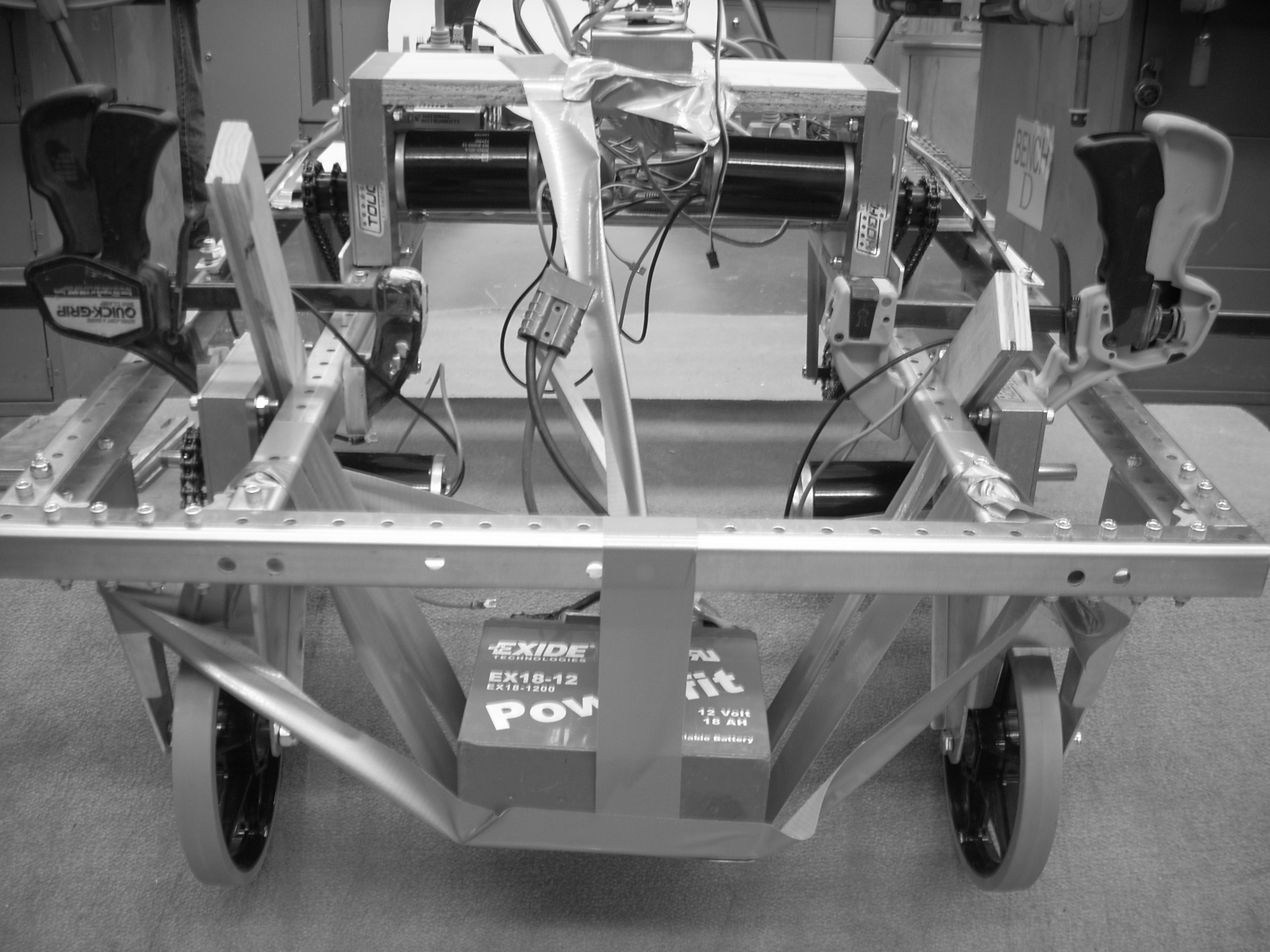 |
Since our science classes in school were no help, we had to proceed by trial and error. A typical project would require five or six false starts untl we worked out a design which would work. We learned to use lots of duct tape and temporary wood blocks and mechanical grippers during the early trials. then, when we refined the design, we would go back and build a solid model out of Erector parts, precisely cut wood pieces and plastic piping. All of us put together bought huge amounts of lawn mower wheels, bicycle chains and sprockets from Kuhlman's Repair Service. Notice the battery here suspended with duct tape and, to the left and right, the grippers holding things together. |
Three things fascinated us : amusement park rides, remote control vehicles, and robots. We especially loved robots. We somehow sensed that, at 13 or 14, we were on the cutting edge when we were working on robots. They were challenging but they were also frustrating. It's quite likely many of us learned to cuss just so we could vent our rage at something which for the 20th time refused to work like we wanted. There were so many variables : the wiring, gearing, sensors, weight distribution, etc. We were like a doctor trying to diagnose a patient : when something was wrong, the problem could be any one of two dozen causes. One thing we learned early on was that a real world robot did not look like a human being like they did in Hollywood movies. We loved Robby the Robot in This Island Earth but ours looked like they had been built with a kid's Erector Set on steroids, which, in fact, they had. It never really occurred to us that we were learning more science at home in our basements than in our science classes at school. Only when we got to college did we realize that all this "play" would pay long term dividends. When we were in seventh and eighth grade, we had to put up with our mothers referring to what we did as "down there messing around in the basement." Often, we maintained projects over long time periods. We'd build it as well as we could, and when we hit a wall, let it sit for several months. Then we'd come across an idea in a magazine or book which was the breakthrough, and we'd go back to work until the next dead end. We kept tinkering with some of our gadgets on into high school. Some of them still sit in attics and basements as souvenirs of our youth. |
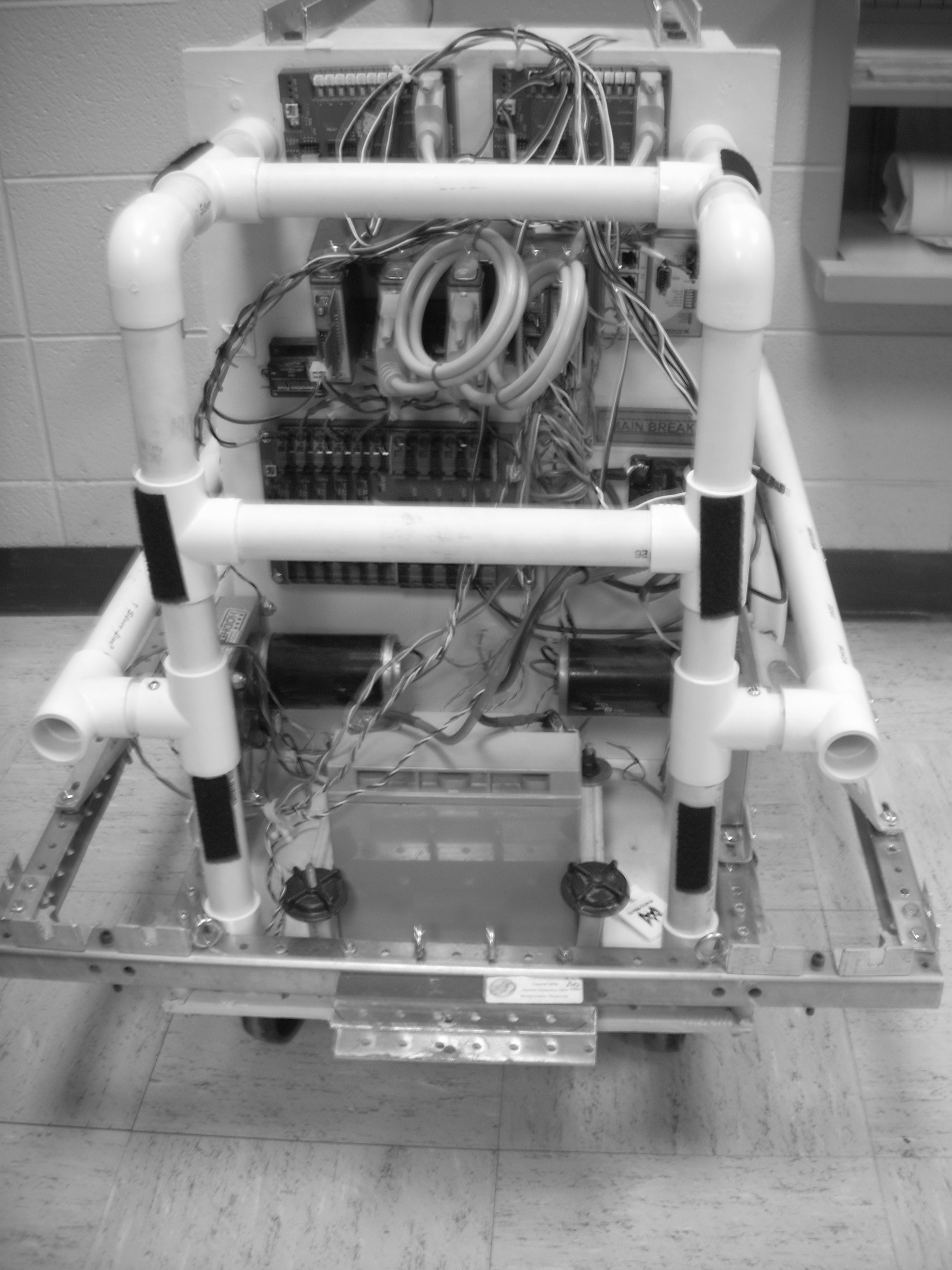 |
| Please email your photographs to Coraopolis60@aol.com. We especially need photos of the Friday Night Club; high school baseball; various scenes at the YMCA such as pool, pingpong, swimming, weight lifting and the gym; junior high football or basketball; classroom scenes in elementary or junior high; school holiday decorations such as Christmas trees; students in their homes with their Christmas trees or model train layouts; and field trips. We need photos with recognizable faces. Do not send original photos by mail; they are too valuable and it is too risky. |